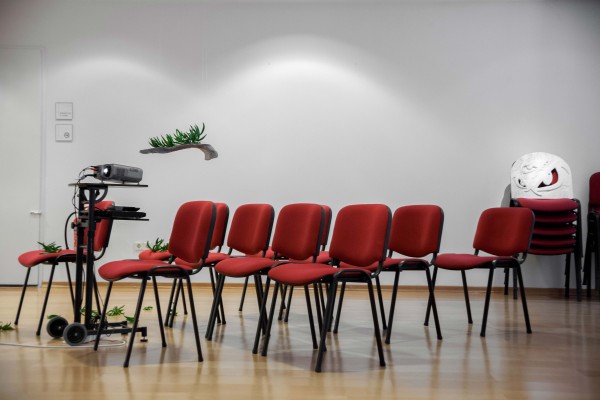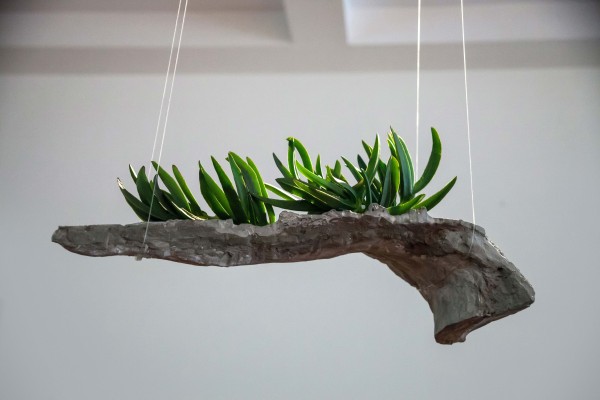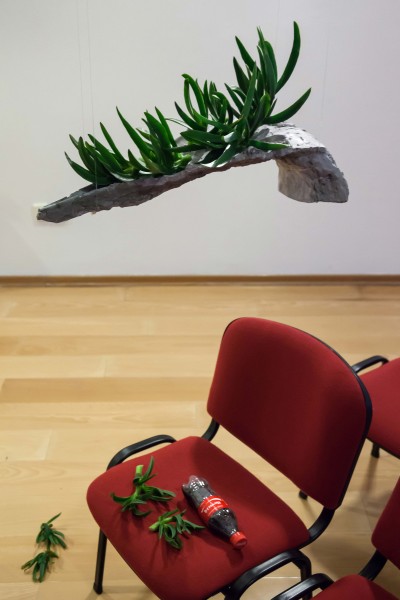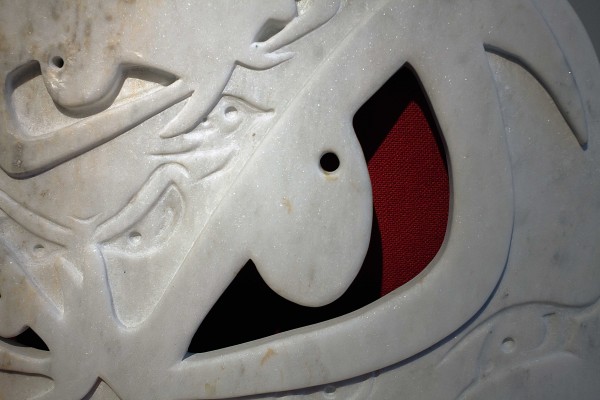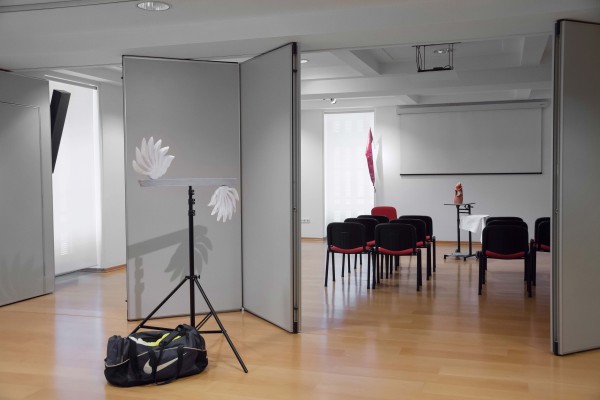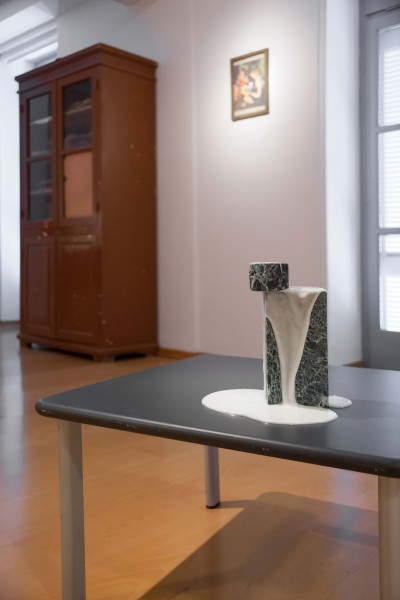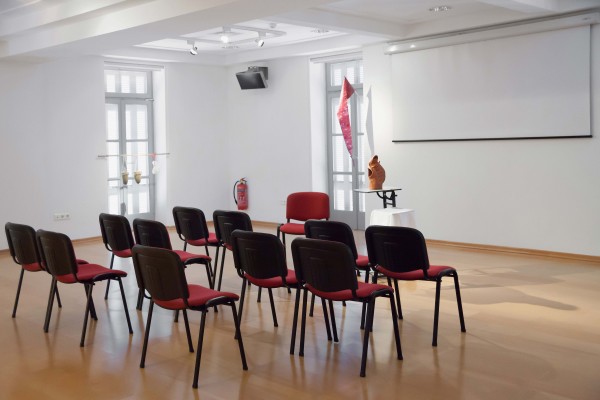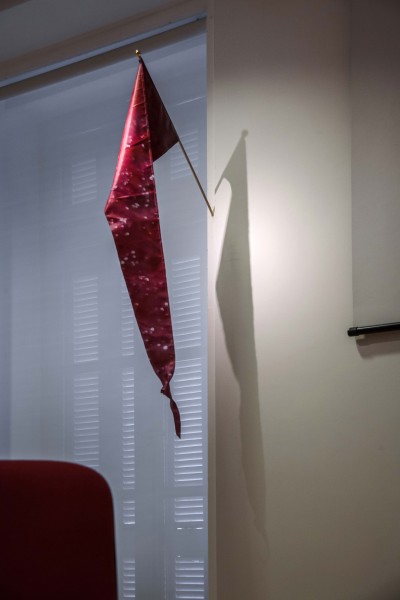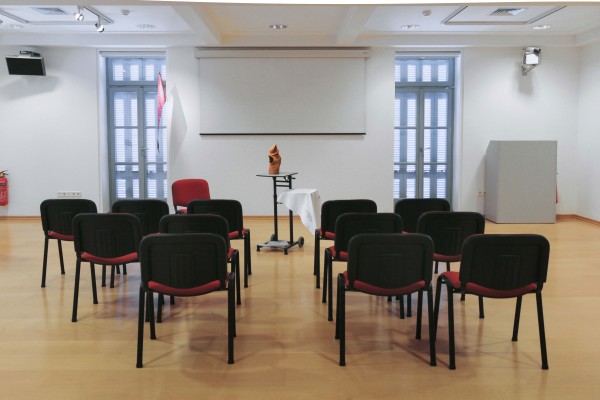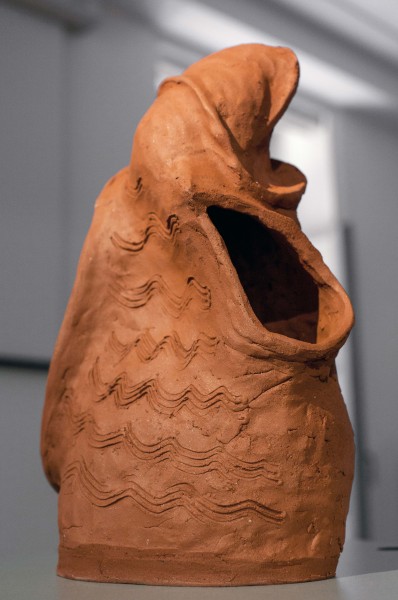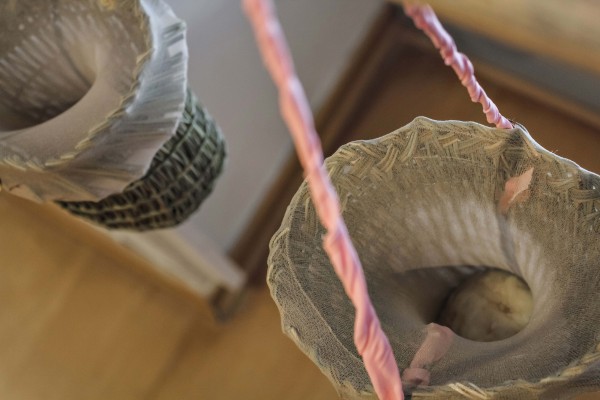Exhibitions
- 2021 — Tending towards
- 2018 — Oh that I had a thousand tongues
- 2017 — Reassembly
- 2016 — Curiosity
- 2015 — Time flies like an arrow, fruit flies like a banana
2021 — Tending towards
Tending towards concludes with the launch of an online exhibition. Throughout the summer the project unfolded across multiple locations both virtual and actual presenting artistic research carried out in the local context of Tinos. Mapped through the specifics of the North Cycladic topography but also the many arbitrary traces of online life, Tending towards considered how to address the fluidity of contemporary embodiment and artistic production within. Subject to data collection mechanisms and through face or voice recognition the body is translated into text. We can no longer be understood as finite unities, but instead fluid cartographies or else distributed networks of corporate agency. Tending towards opens up a conversation on where our bodies are tending towards and the potential for new trajectories.




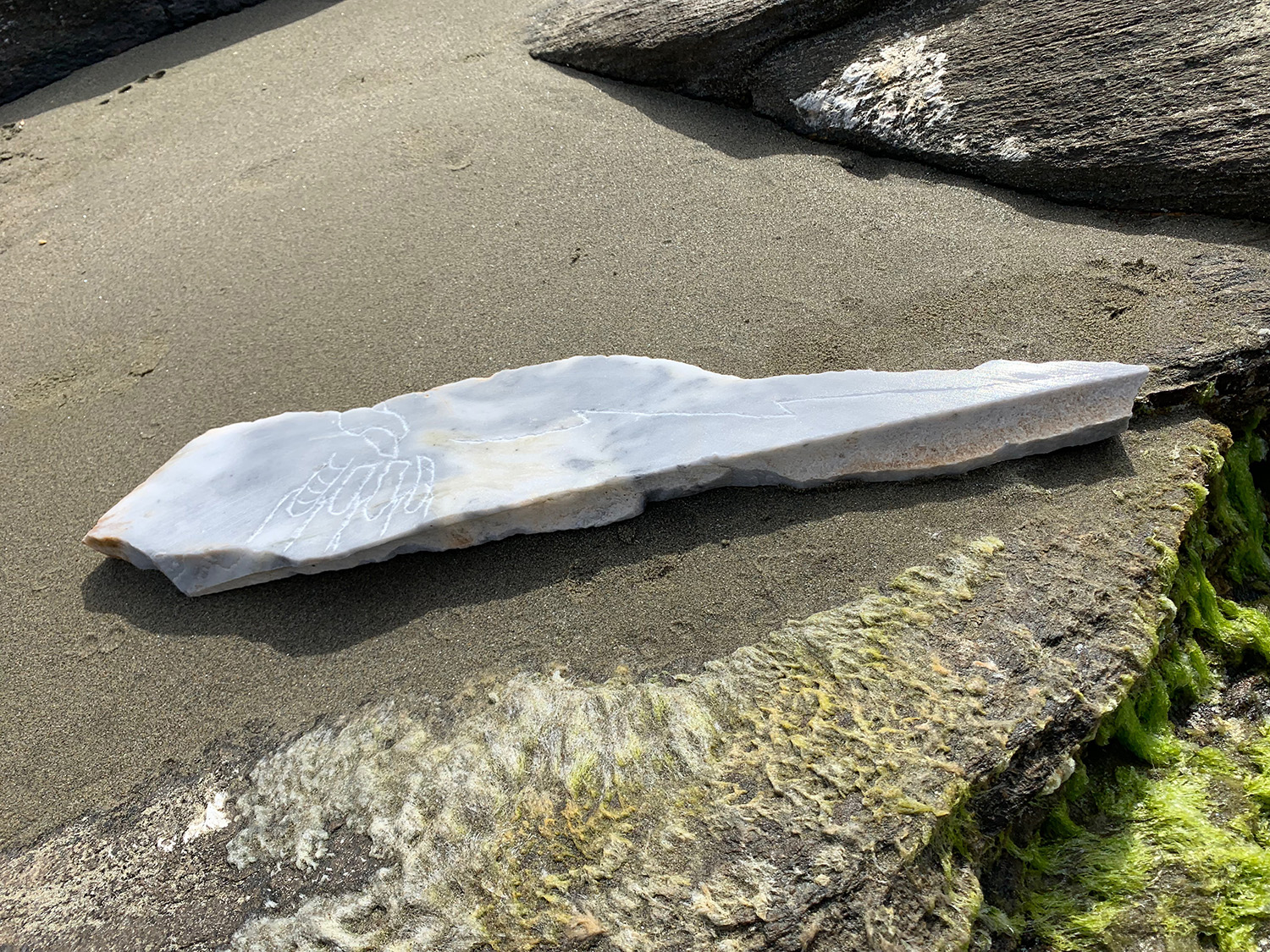














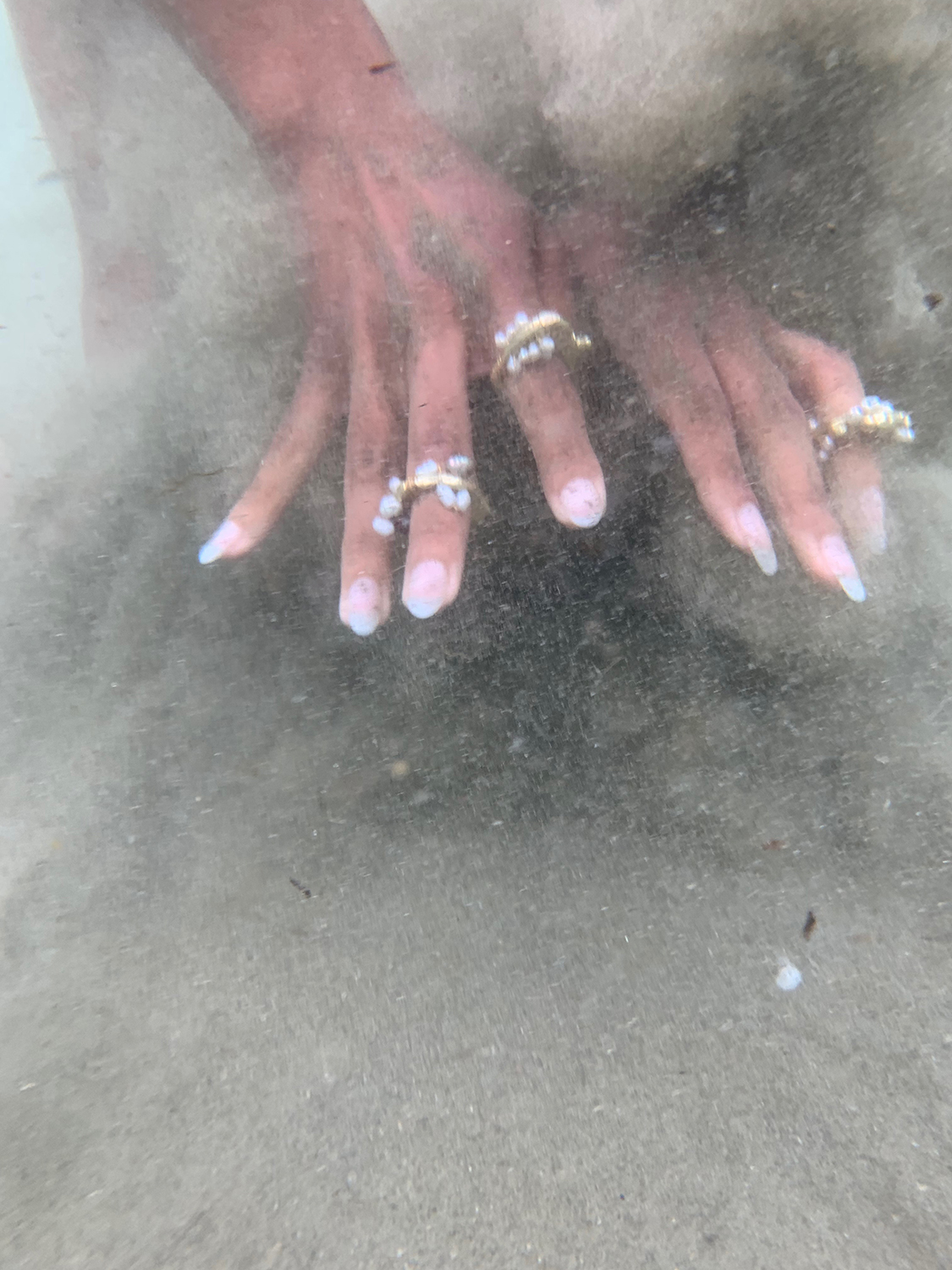



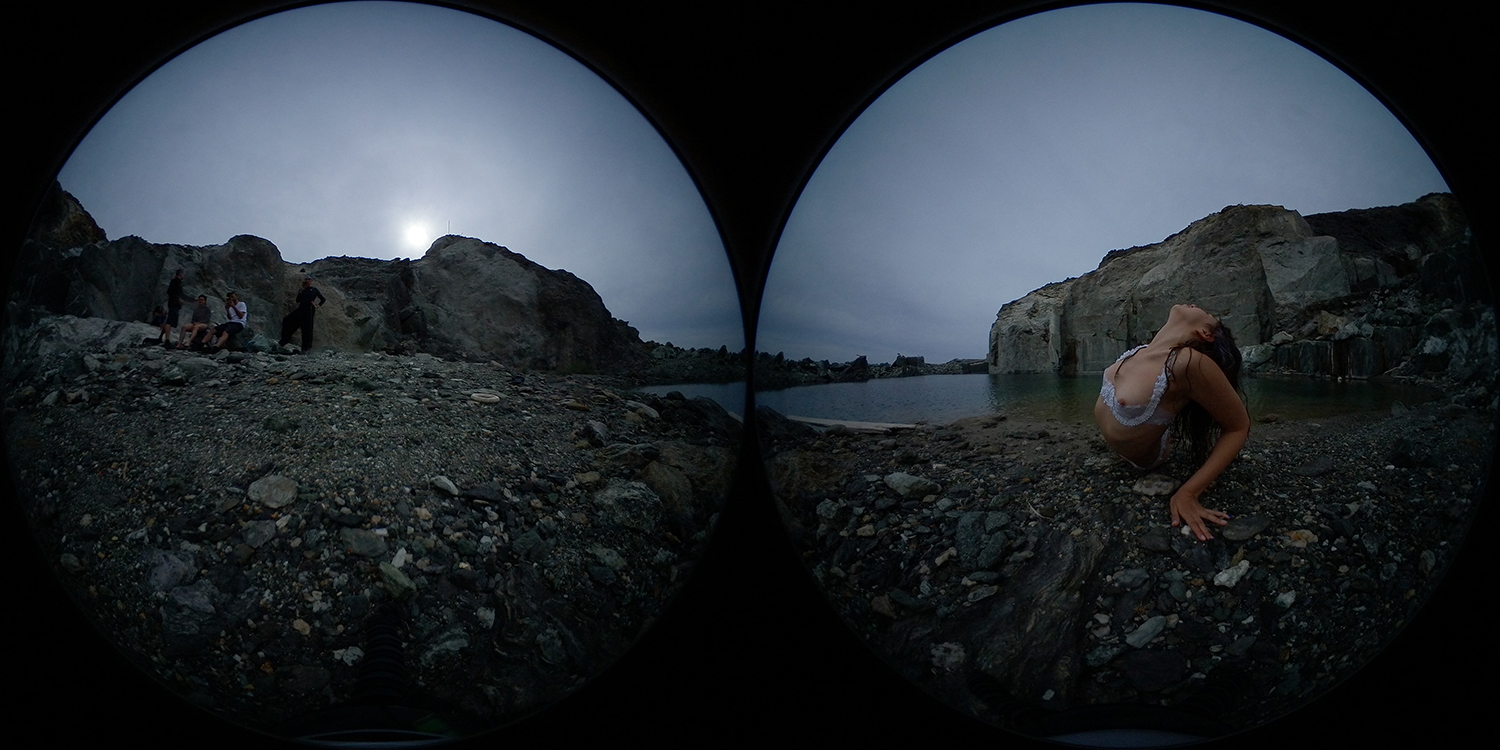

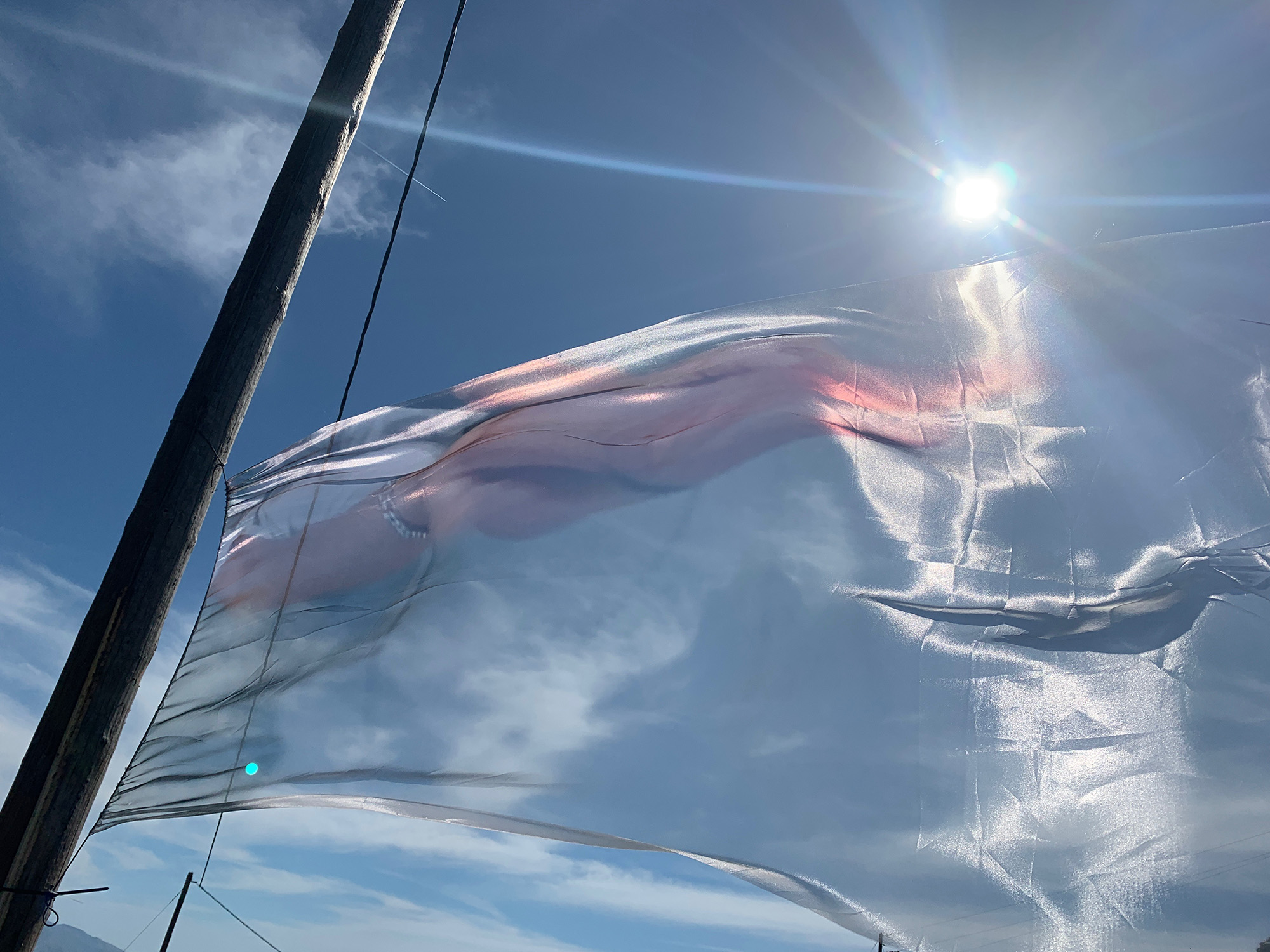
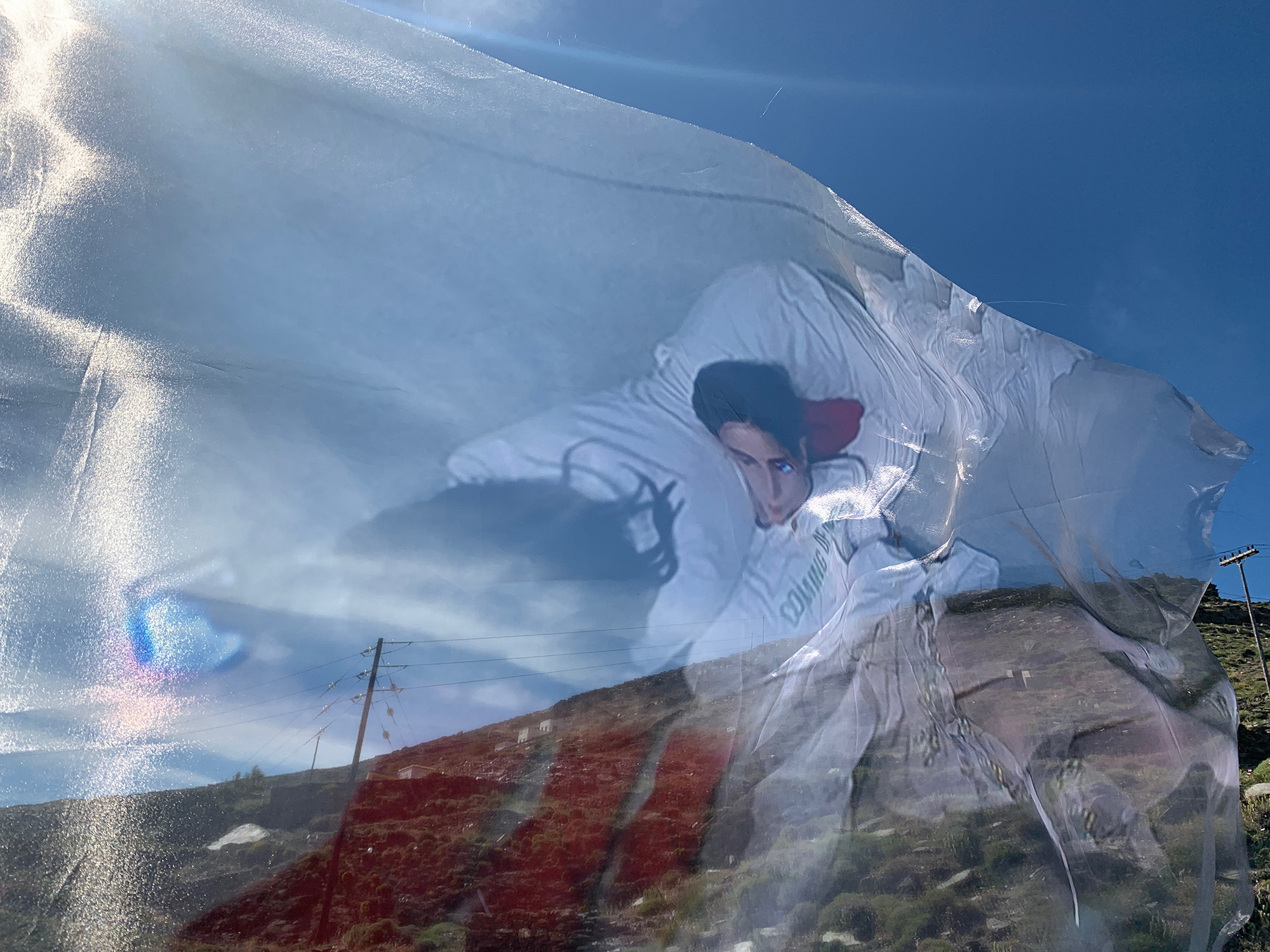
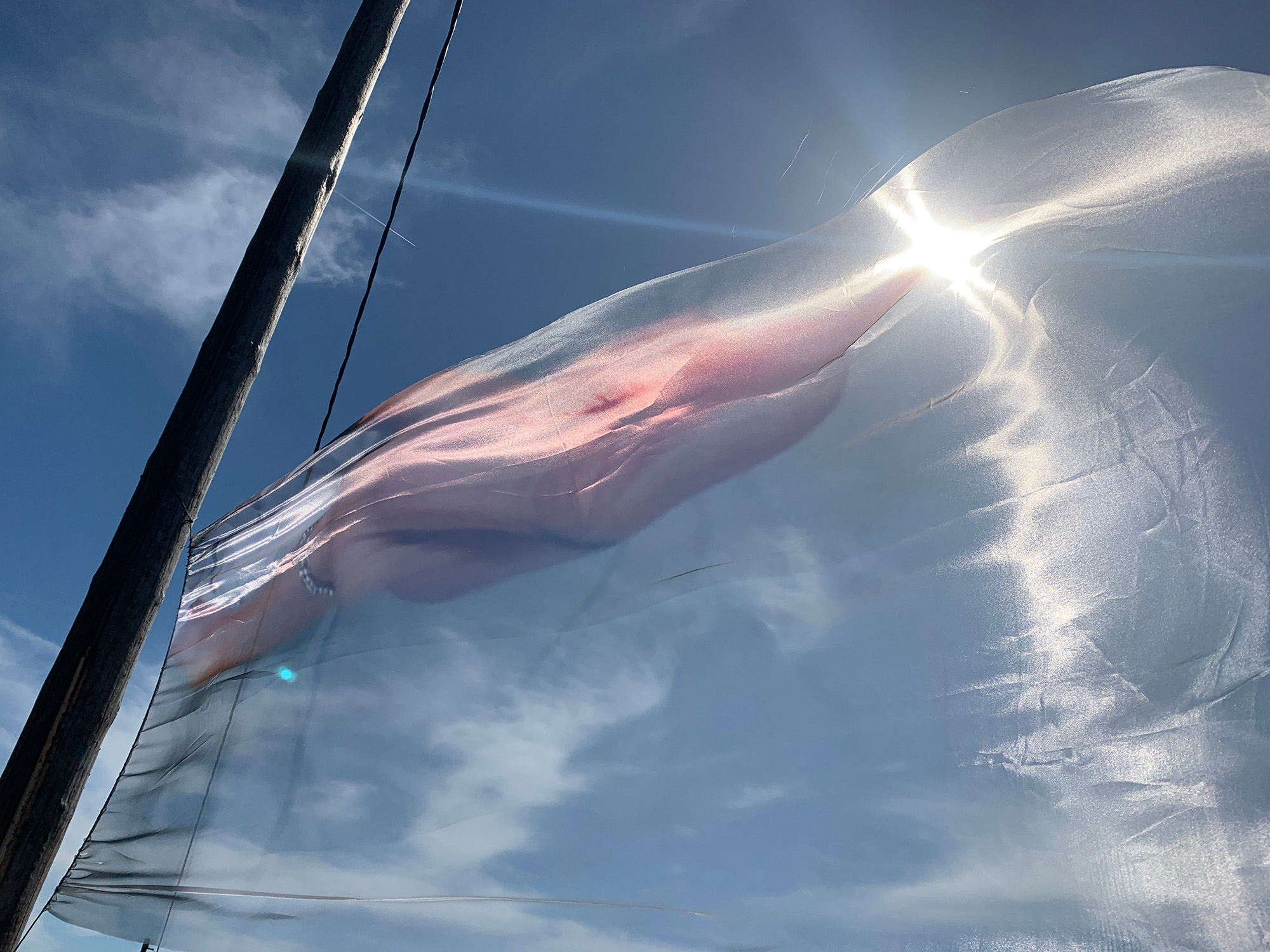

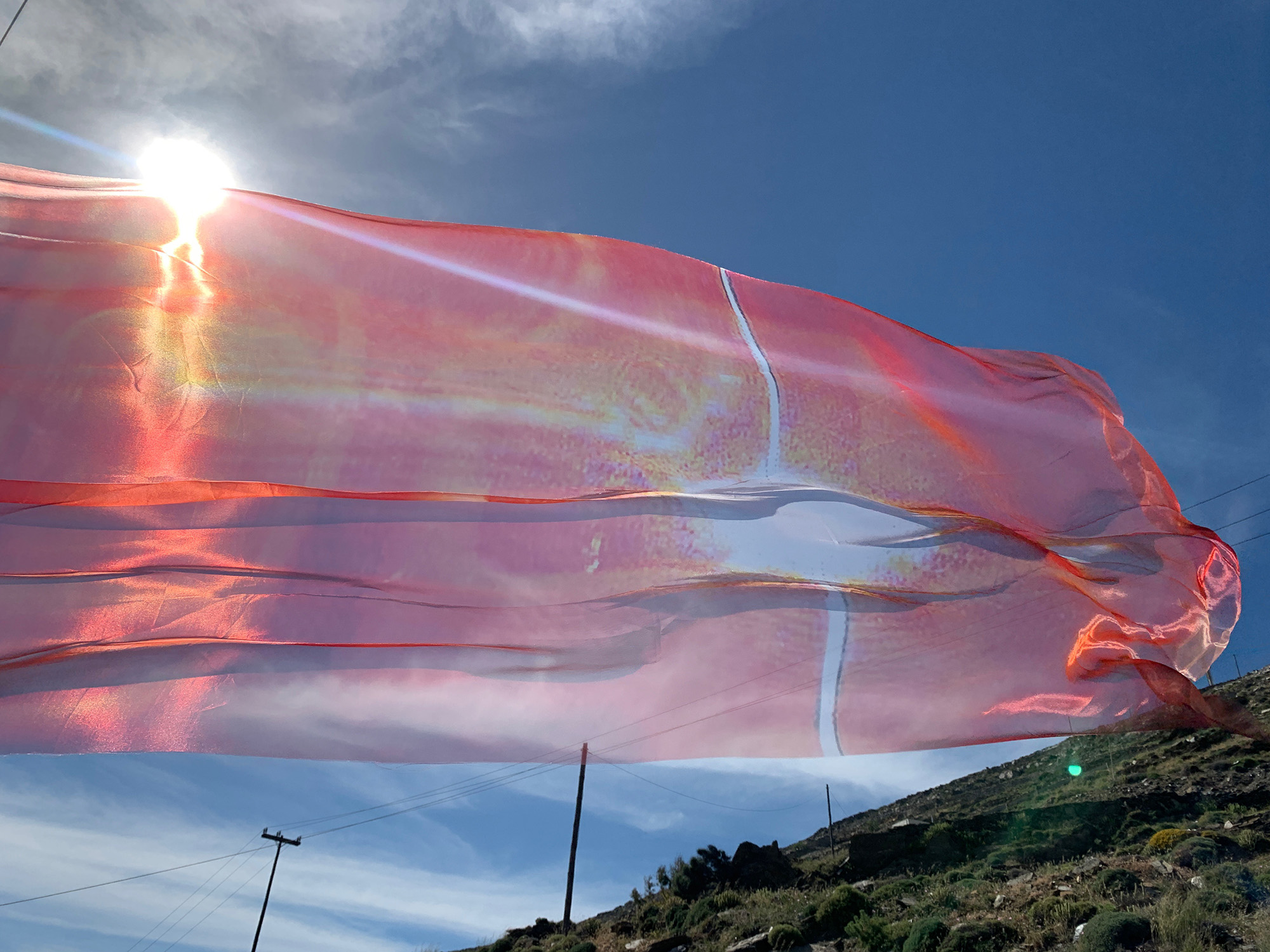



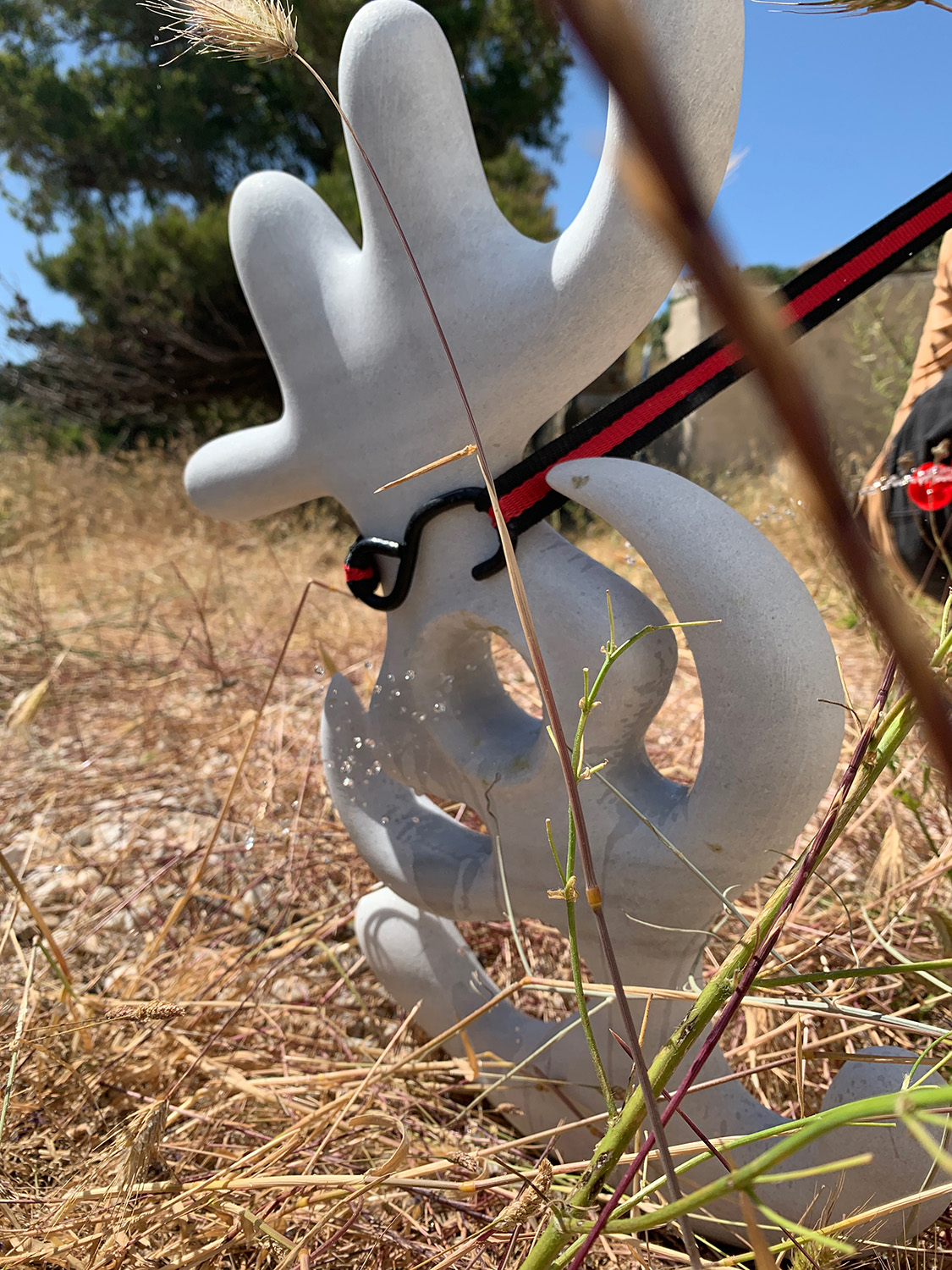


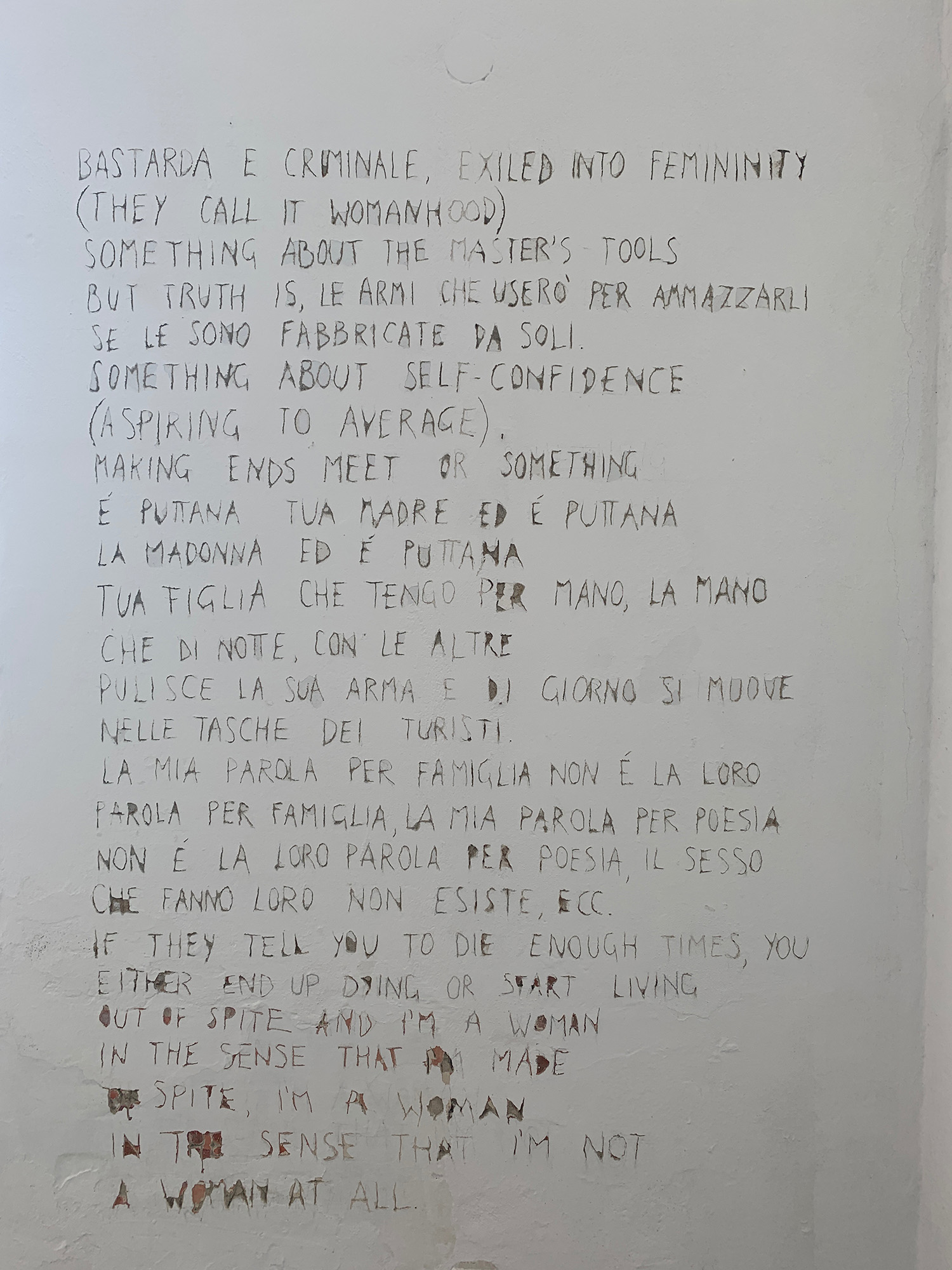
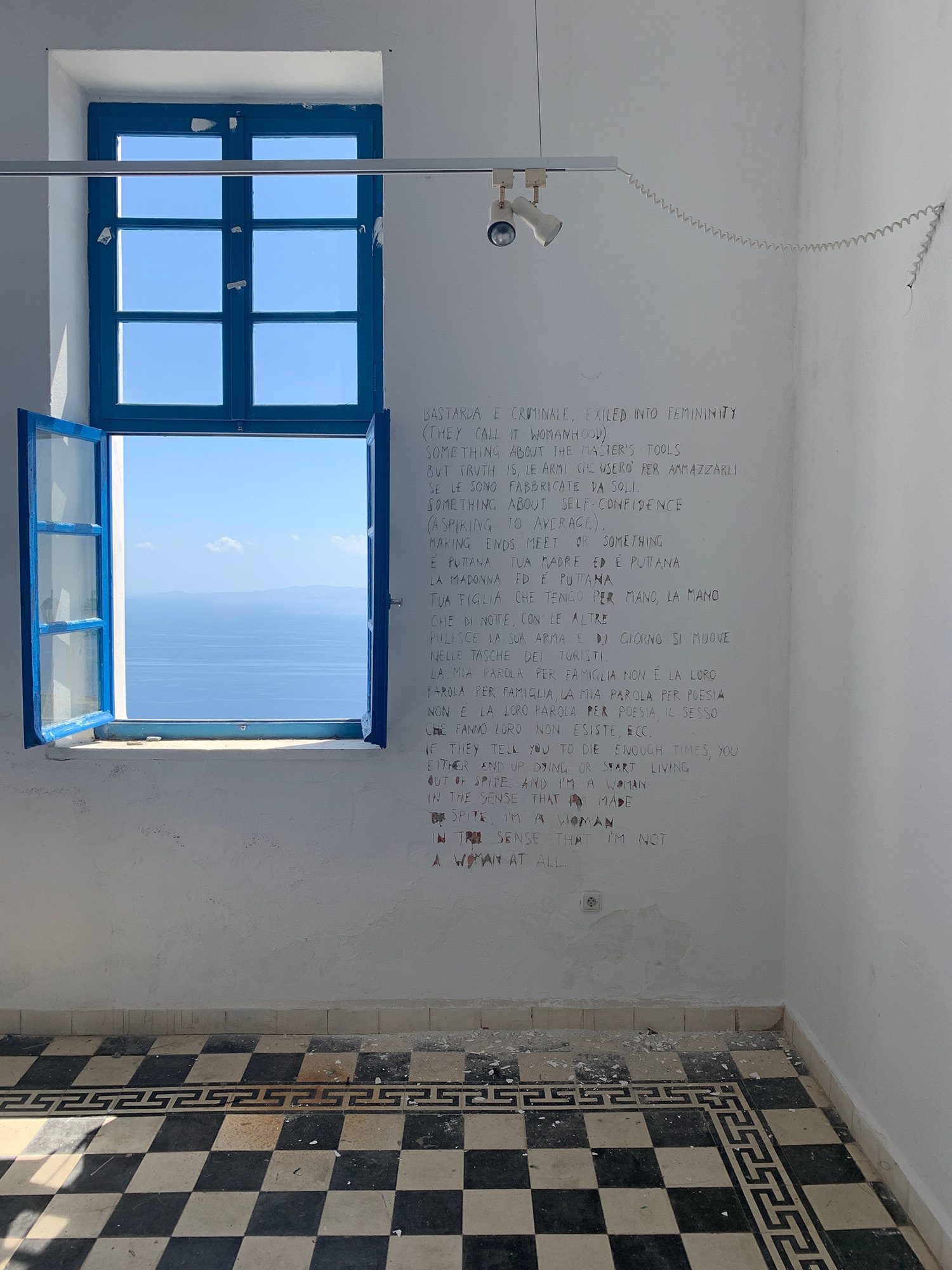
















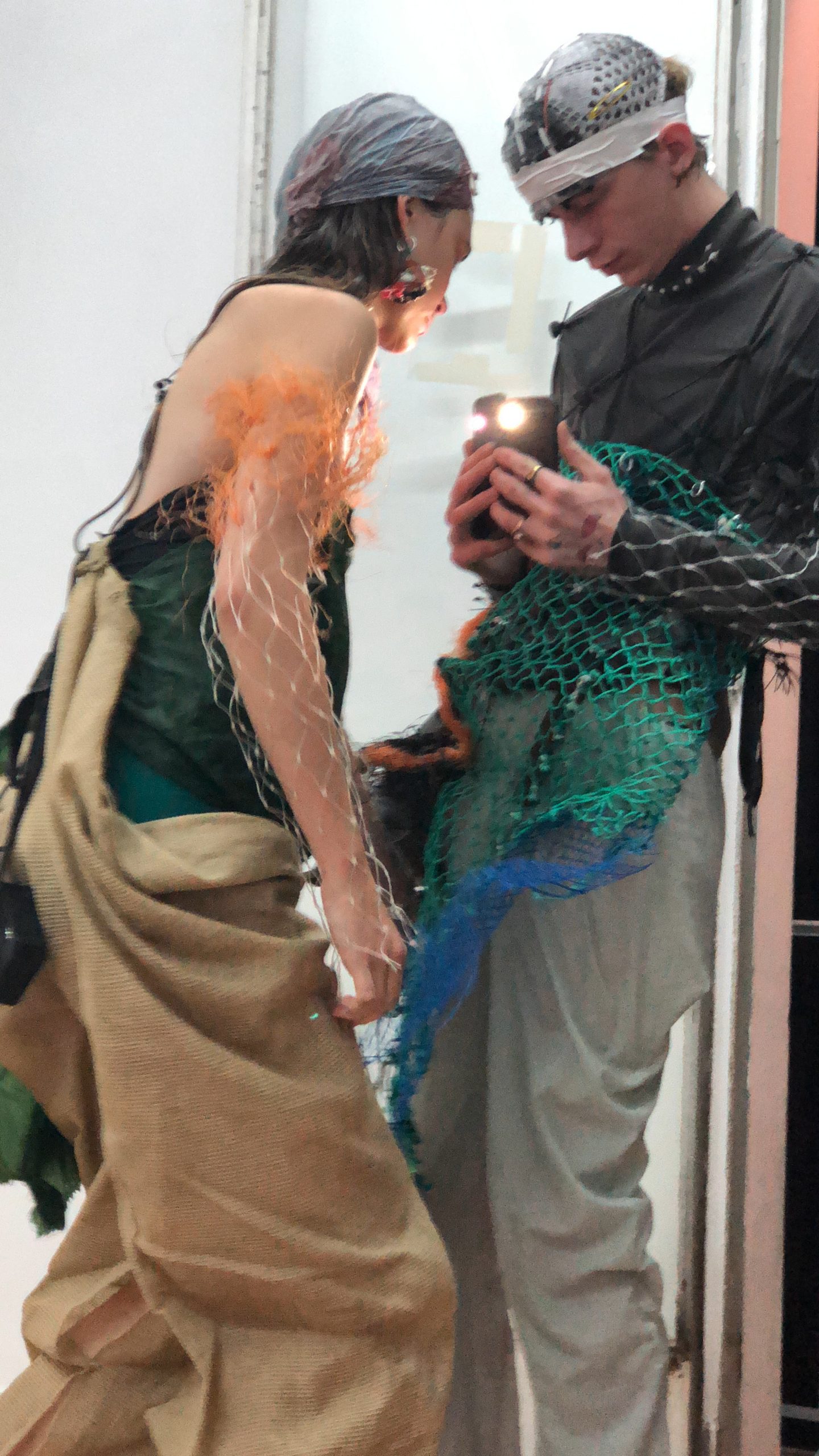

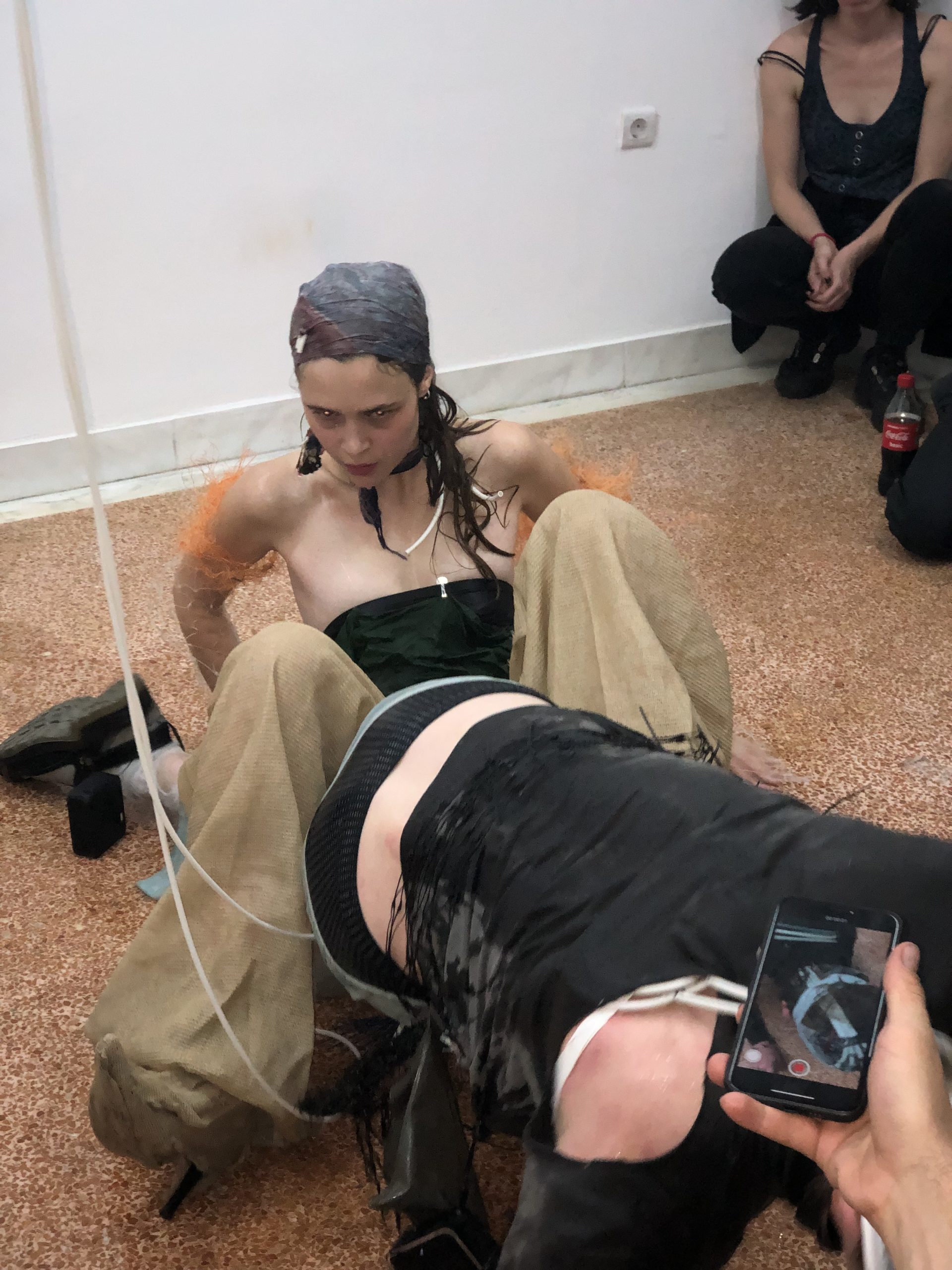

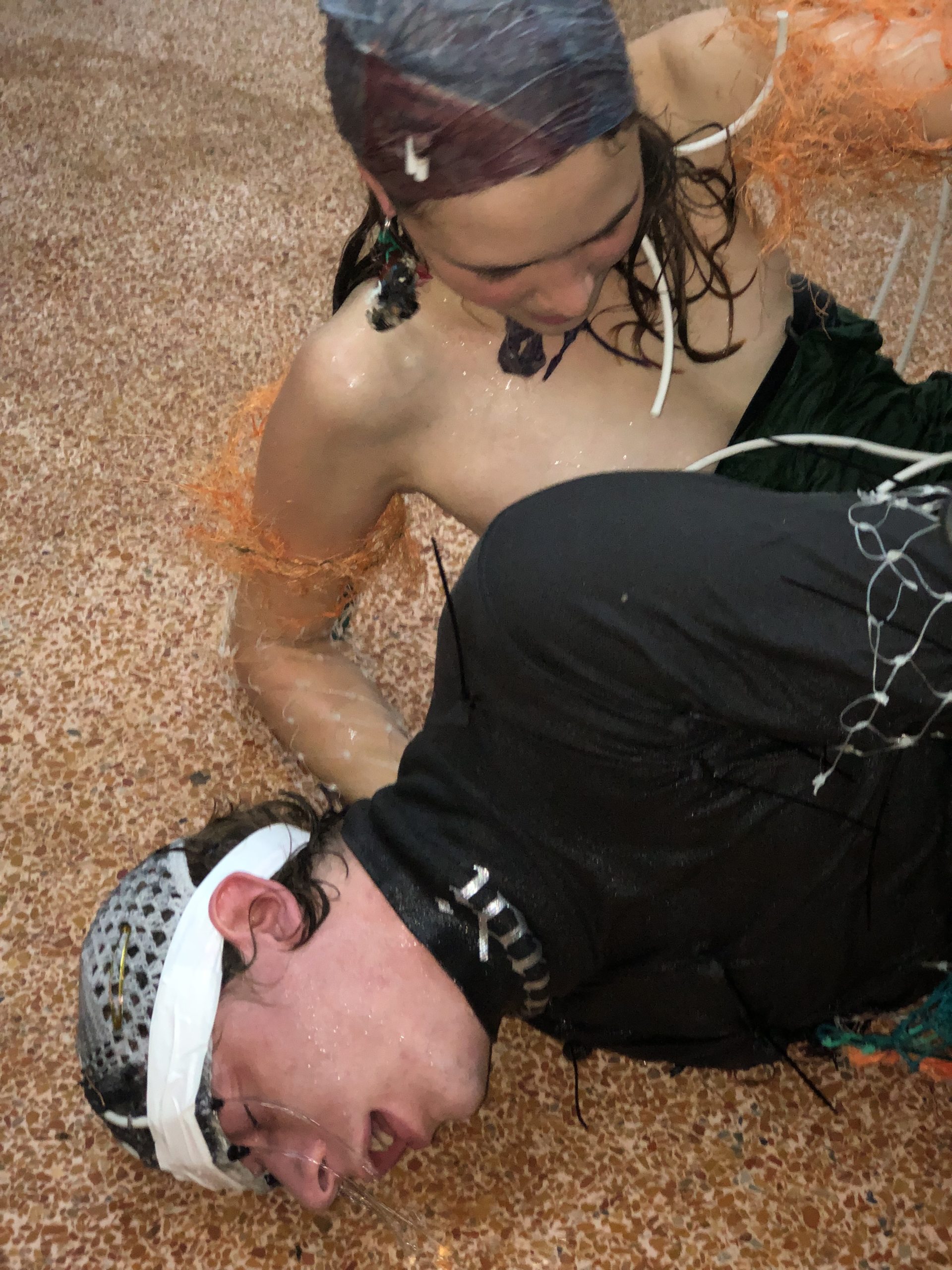






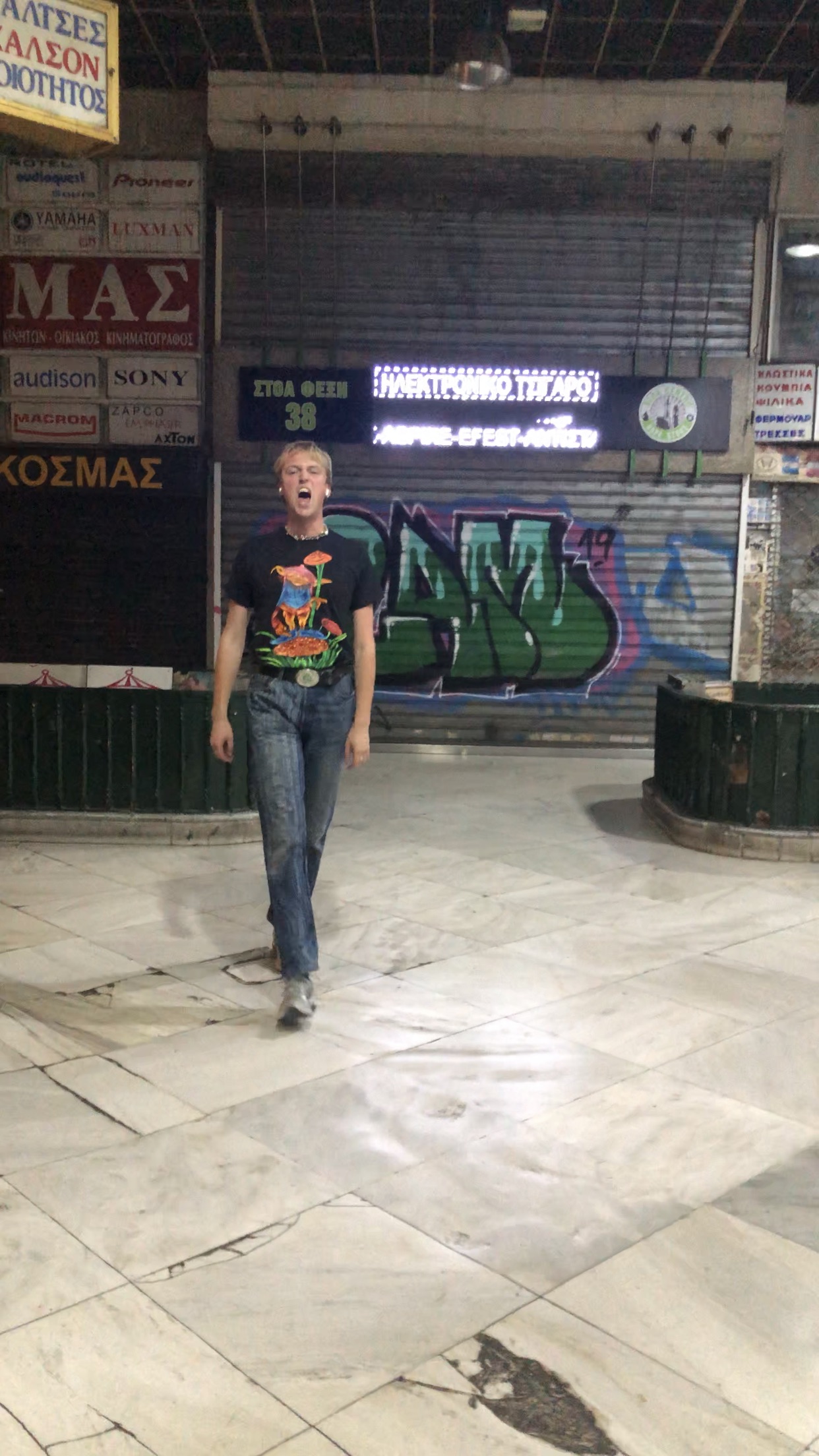
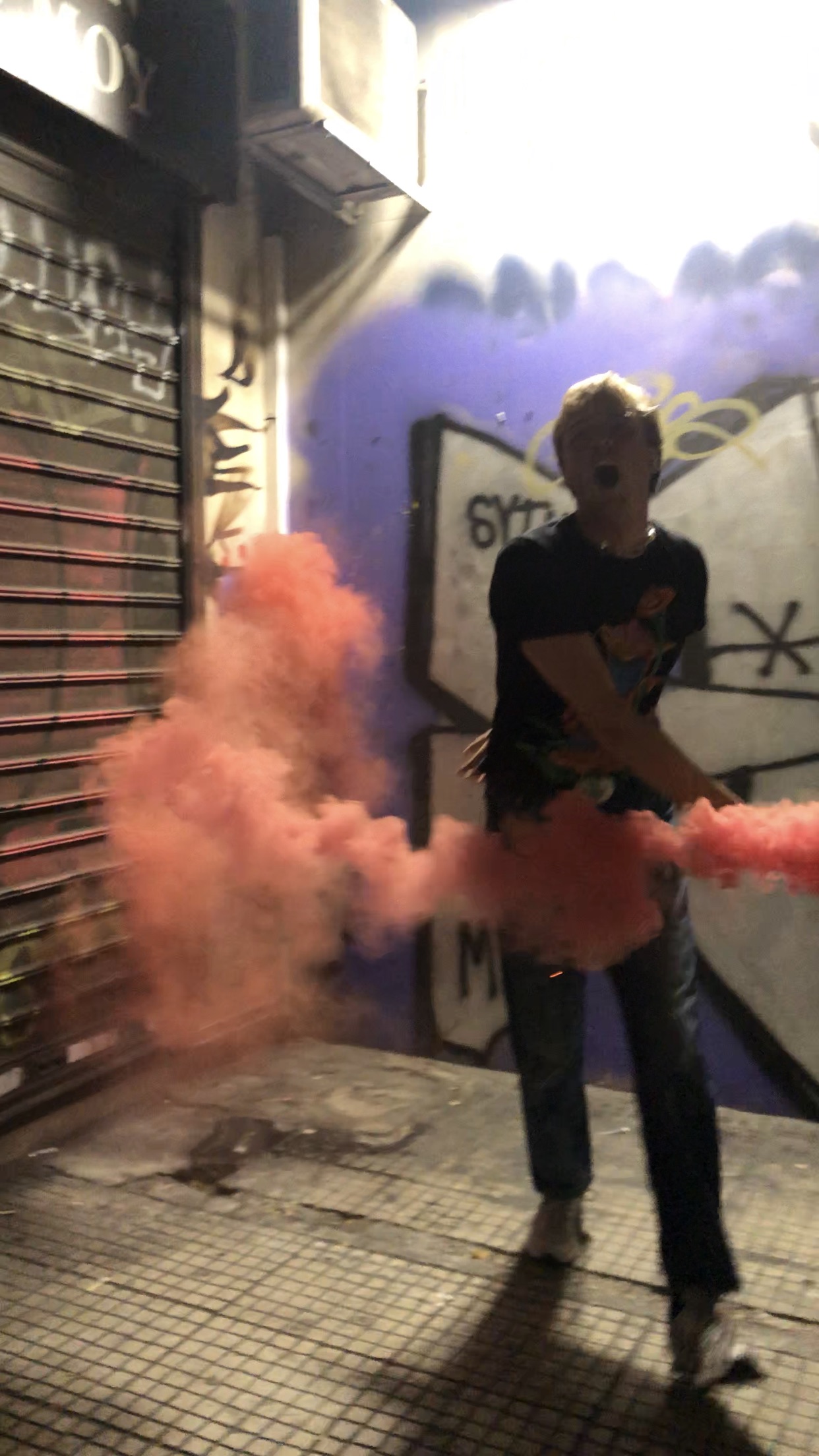
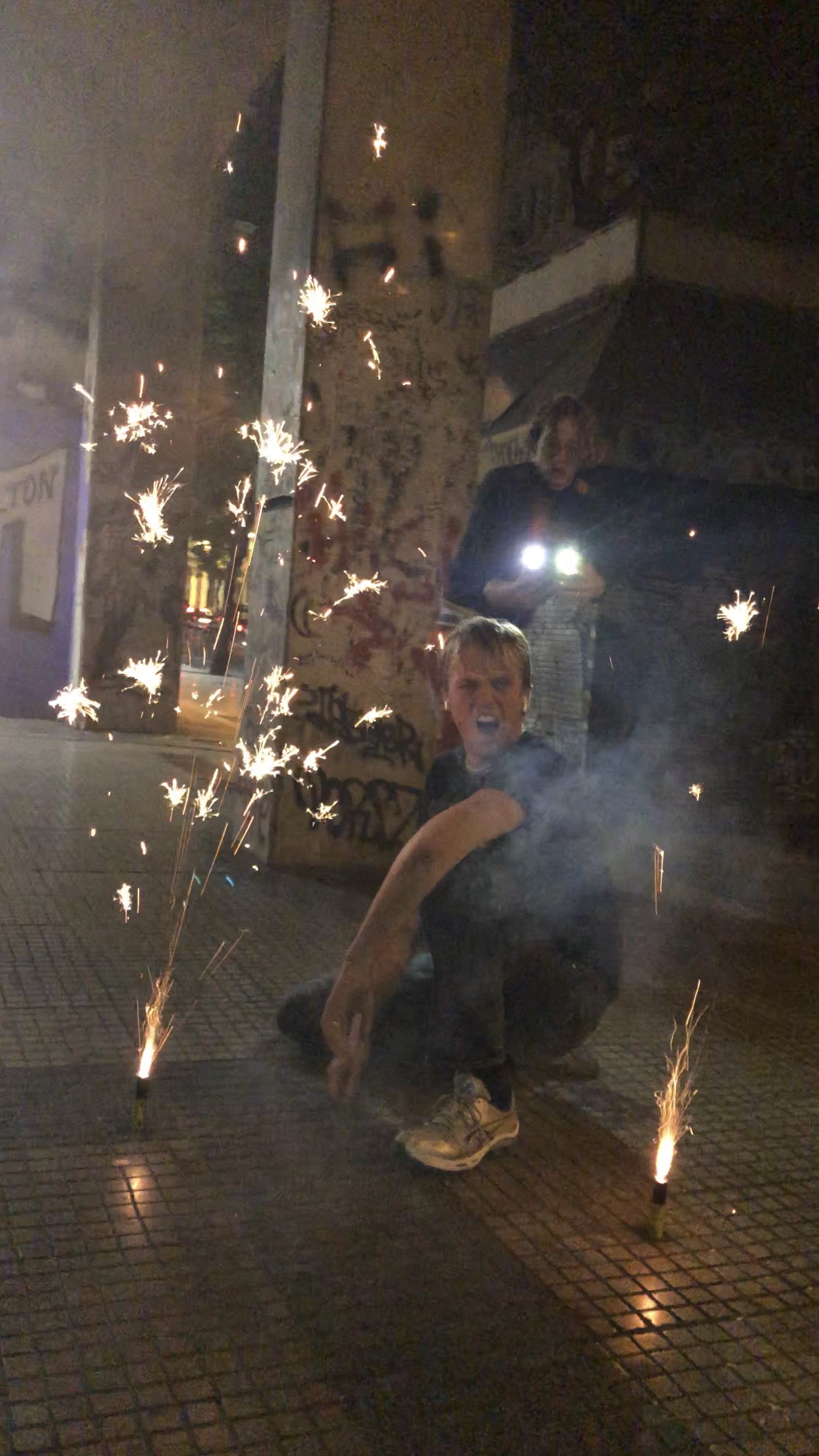
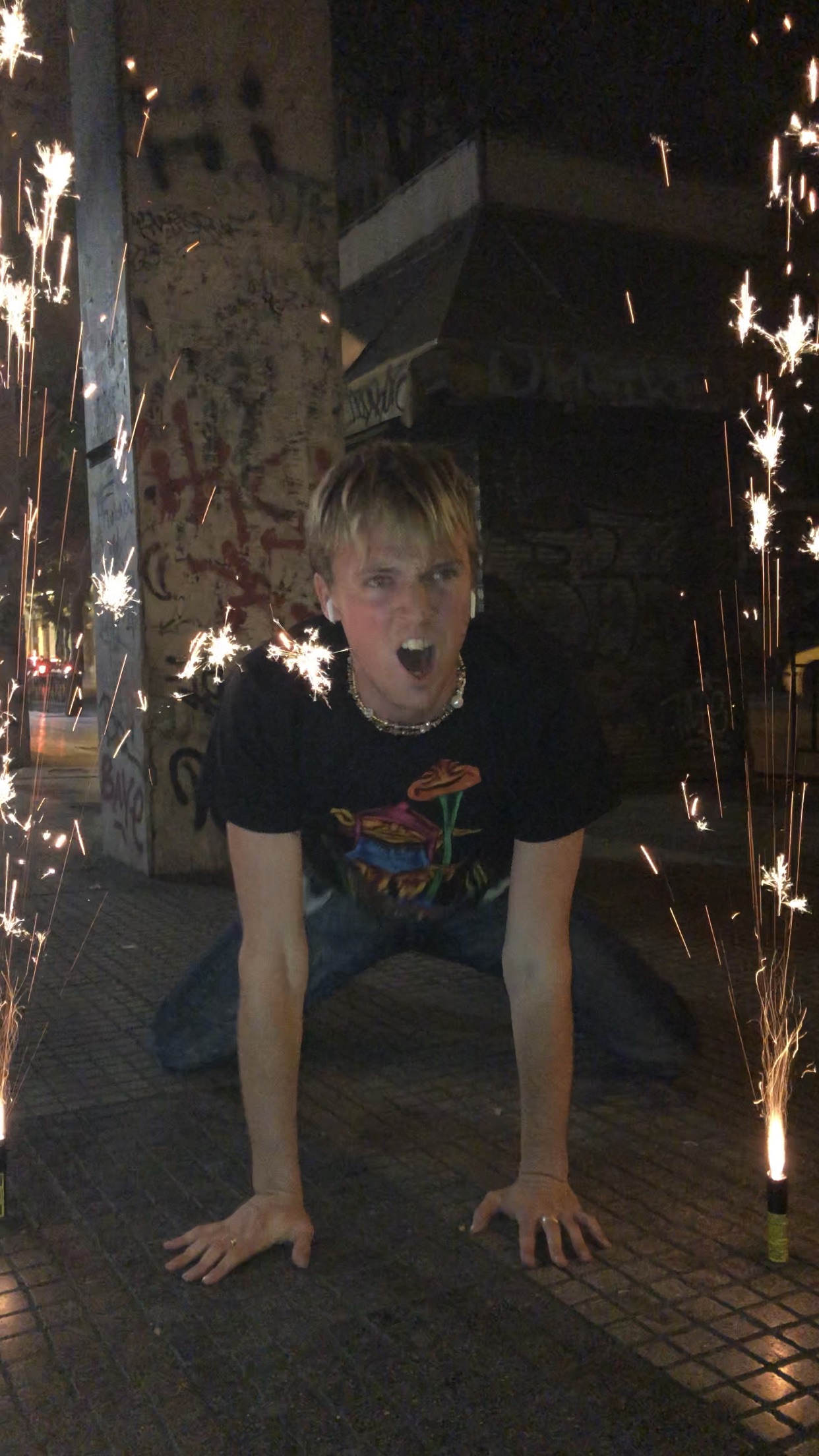
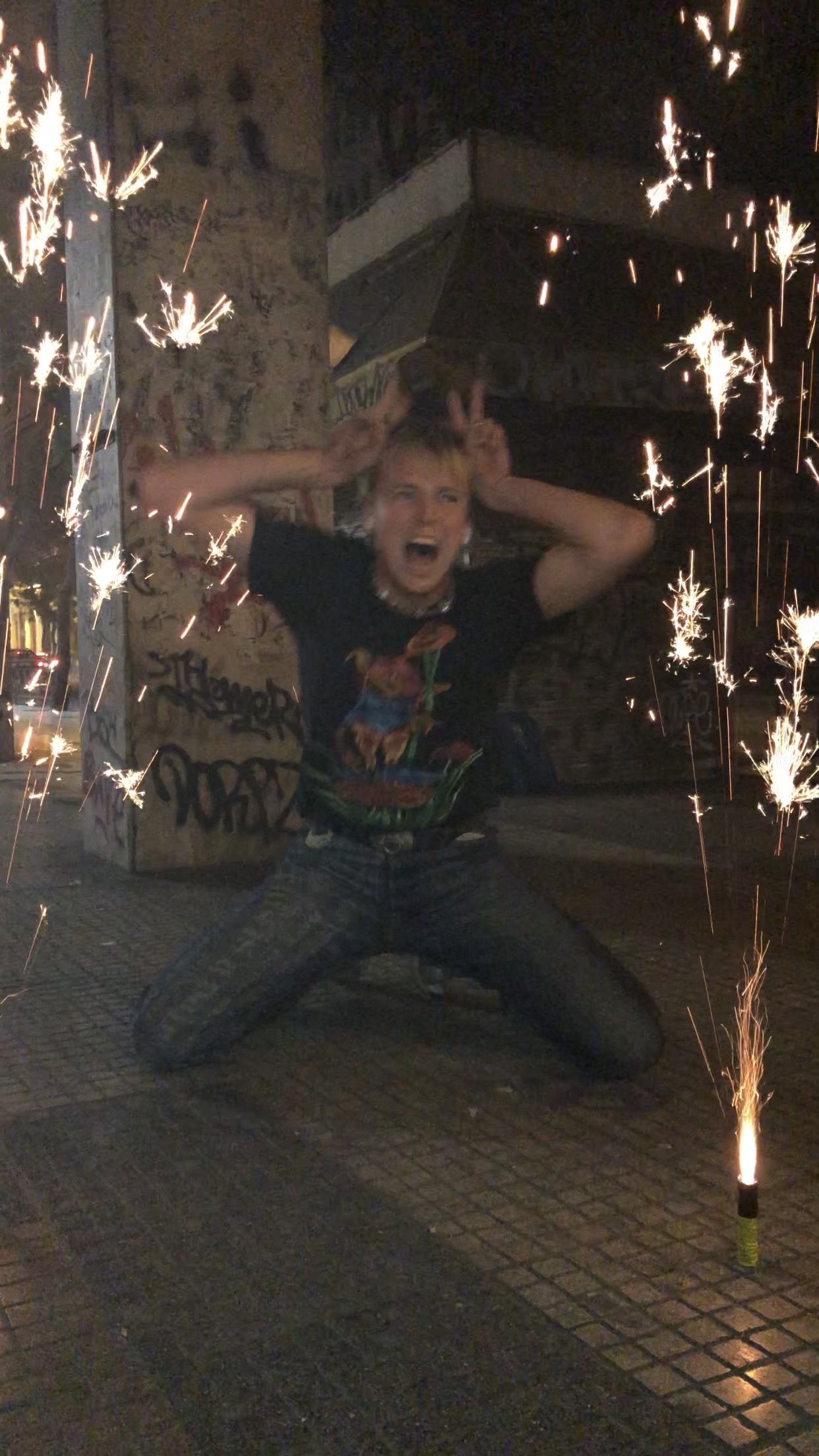
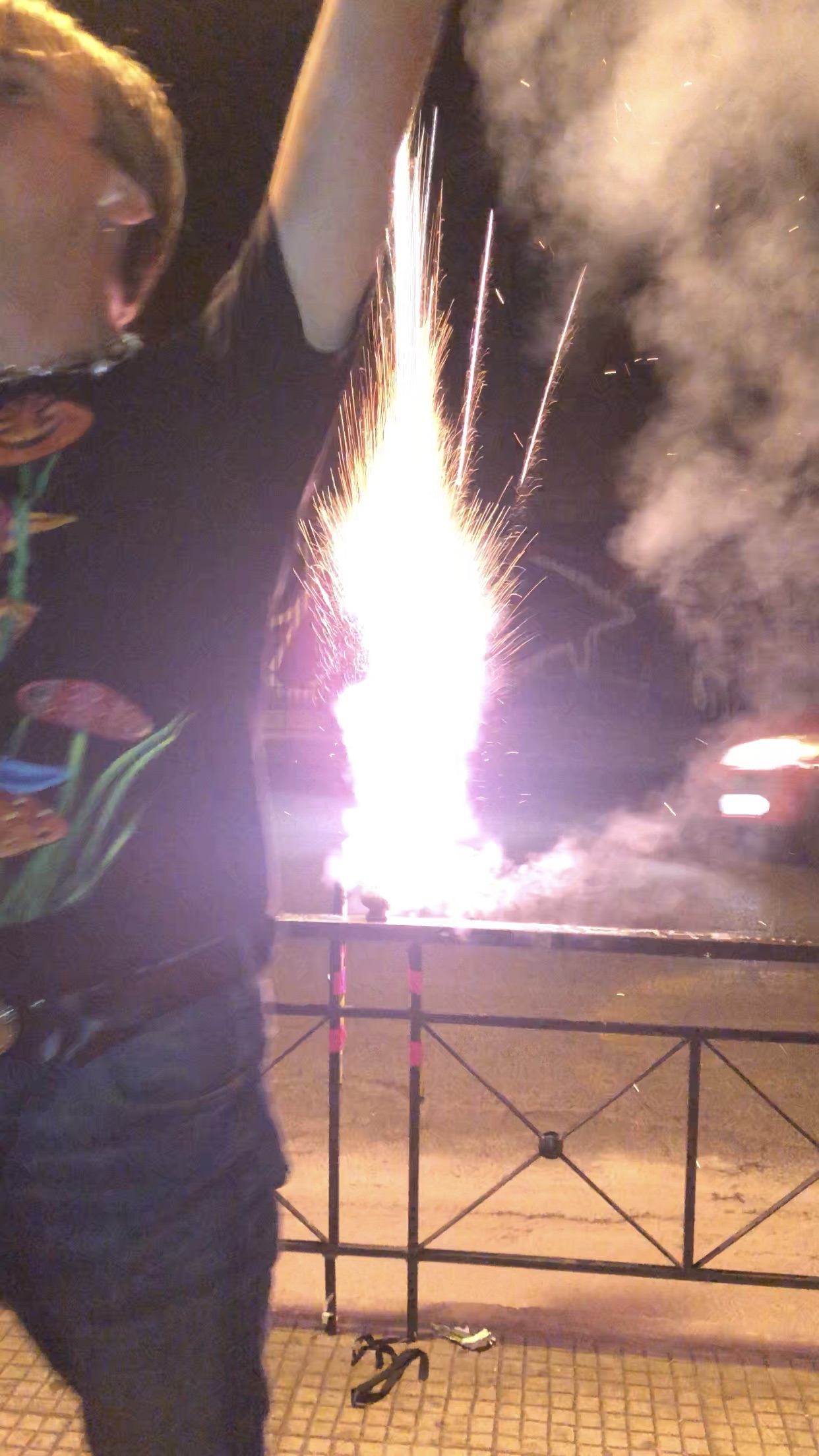
Curated by
Dorota Gawęda & Eglė Kulbokaitė and Berlin based GRUPPE collective
Artists
Eva Collé, DAGLARA, GRUPPE, Deborah Joyce Holman, Dorota Gawęda and Eglė Kulbokaitė, Esben Weile Kjær, Julian-Jakob Kneer, Ceylan Öztrük, Dimitra Petsa, Petros Touloudis
Performances by
GRUPPE with Judith Shyambala Heinemenn and Lukas Stoever, DAGLARA with Georges Jacotey, Rafael Papad and Lefteris Vokas, Esben Weile Kjær
Hosted by
Tinos Quarry Platform in partnership with AMOQA, the Athens Museum of Queer Arts
Images
Courtesy of the artists
Supported by
Outset Contemporary Art Fund, NEON, Swiss Arts Council Pro Helvetia
2018 — Oh that I had a thousand tongues
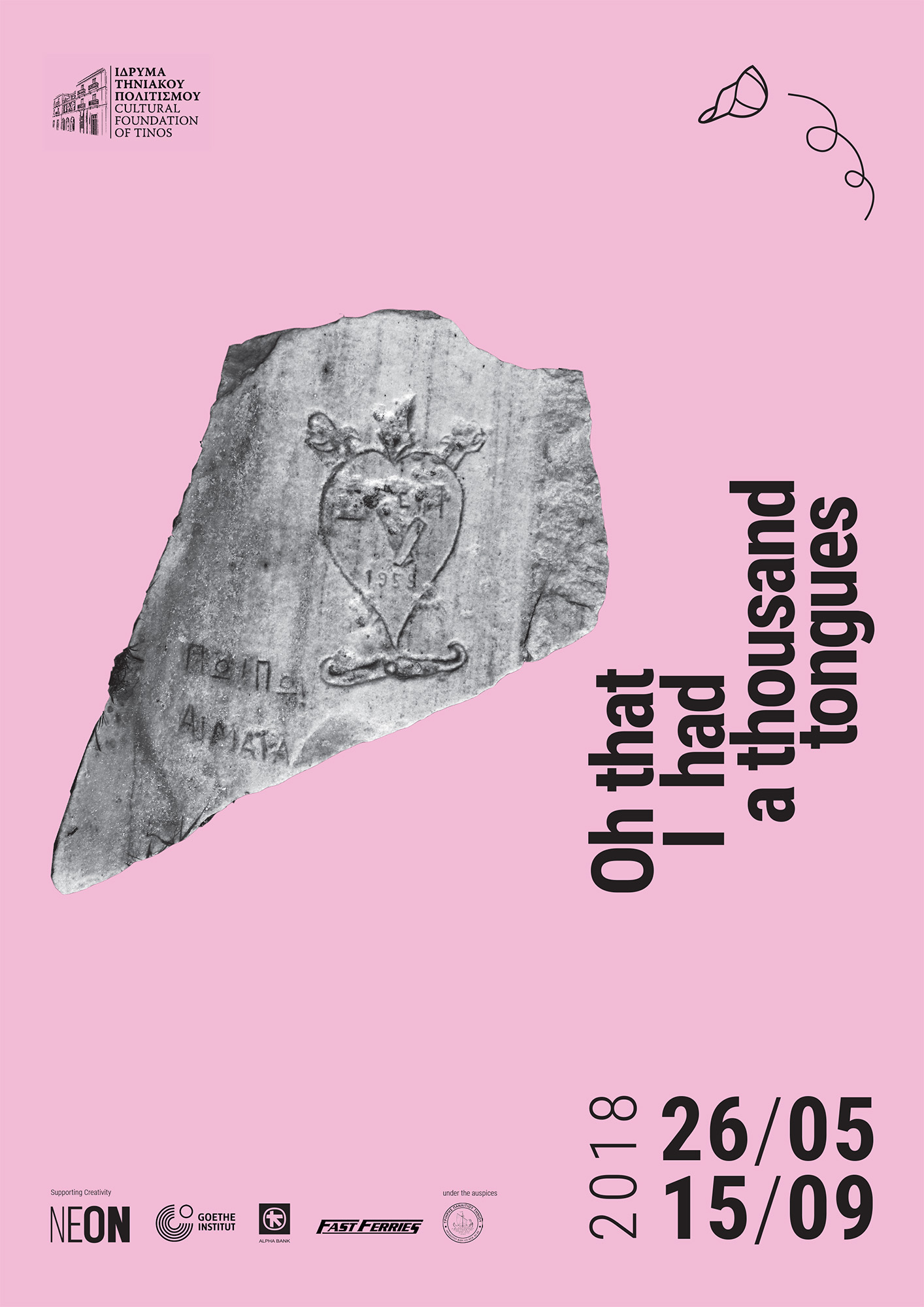
Artists
Olga Balema, Gerry Bibby, Juliette Blightman, Anders Clausen, Maria Georgoula, Morag Keil, Anna Lascari, Maria Loboda, Henrik Olesen & Gerry Bibby, Emanuel Rossetti, Petros Touloudis
Curated by
Nikola Dietrich
Organized by
Tinos Quarry Platform in collaboration with the Cultural Foundation of Tinos
Venue
Cultural Foundation of Tinos, Tinos, Cyclades, Greece
Opening
May 26 2018, 18:30 with lecture performance Year of the Dog by Juliette Blightman and soundscapes by Paolo Thorsen-Nagel
Duration
May 27–September 15, 2018
Oh that I had a thousand tongues is a group exhibition that emerges from language, but diverges from its immediate association with communicability by analyzing and breaking with the processes of its construction.
Within various though similarly constructed political and social landscapes, throughout (art) history, images and concepts have been constantly created to follow direct—or fictional—narrative traces and signs. The question could be, how can a quest for a new language be initiated that breaks loose from the constraints set by predominant forms of society? This could happen involuntarily, as a "slip of the tongue" so the English saying goes, causing a rupture in the usual course of things. This could materialize from a creative field where the act of disorganizing language provokes separations and gaps that compels art to speak another language. If contemporary art aspires to anything, it is to turn the rules of the game around so as to free itself from the permanences assigned to meaning. It might attempt to grasp the one in the many of intentions attached to words, separating out the different voices speaking, so as to reflect on the social/political implications of different tongues possibly graduating to one becoming the other.
The artists in the exhibition focus very directly on the voice as opinion openly expressed. They refer to the methods through which peoples' voices are manifested—as they bring forward their histories and memories—in an effort to connect to new or uncertain environments and ever changing conditions. These factors seem even more pertinent in remote locations like an island where the many particularities of a place and its time become its specific carrier, where its pasts are embedded in singular details appearing in the present, prompting translation to both admit the subjective and court the sensitive.
The exhibition acknowledges the potential of the contradictory and the incomplete in a story, of (mis)translation and (mis)interpretation as a rich source the artists mine.
The more voices speaking over a time, about an event, a feeling, the richer and fuller history becomes. The more narratives, possibilities, or other truths that are unearthed and given voice the more uncontrollable the story becomes, inviting yet unknown qualities to flourish.
—Nikola Dietrich

This is the second version of a piece Henrik Olesen and Gerry Bibby made as part of a collaborative group of works that dealt with various constructed social-landscapes (Conversation in a Yes/No Landscape, Deborah Schamoni, Munich, 2016). The sculpture balances here between the two exhibition spaces, and bridges two metaphorical images: One side leaning towards a rather abstract internal space (the throat) where conversation and exchange begin to take shape as sound, to the other side (the tongue) where language becomes motif, onto which multiple meanings can be projected. The installation presumes a performative gesture on the part of the visitor as they step onto the work, leaving very direct but also narrative traces and signs to be either swallowed up, spoken out or both.
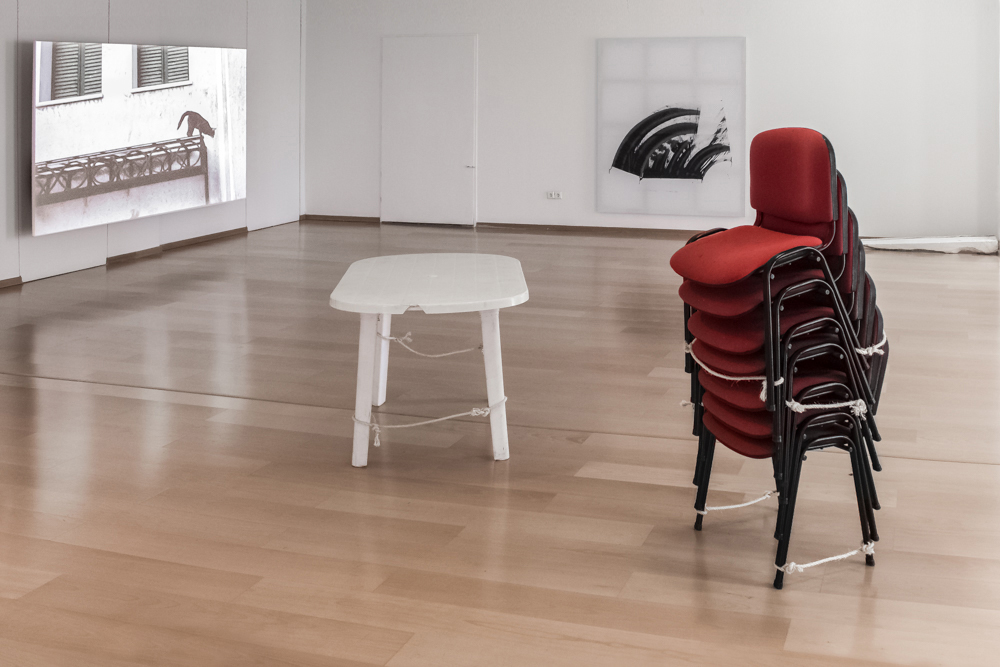
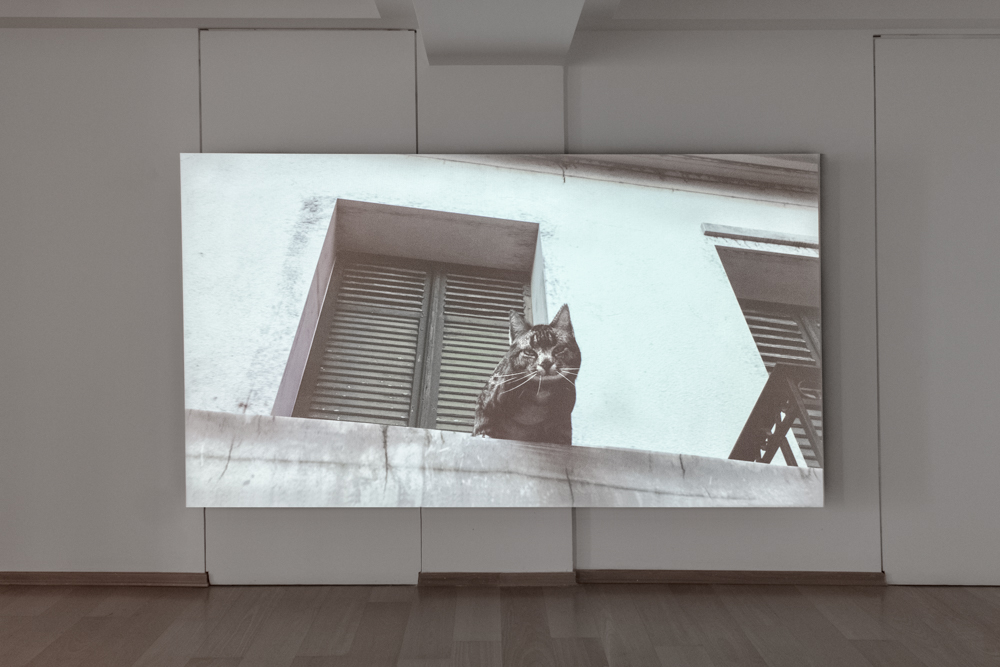
Anna Lascari's Left of the Parthenon depicts the social and political environment experienced by the Greek population resulting from the ongoing crisis and austerity. The setting of the animation is in the commercial district of downtown Athens, which is mostly deserted at nights and on the weekends. A cat is locked outside on the narrow balcony of a commercial building's first floor office. We observe the cat's desperate efforts to attract attention and her nervous and endless pacing on the balcony. We hear her constant, distressed meowing as she searches for someone to help her. Finally, we witness a vicious attack, which, nevertheless, succeeds to a miraculous escape. The work demonstrates an anxiety, the cries for help in a condition that has reached an impasse, as well as the exhausting attempts of finding a way to escape. Consequently, while the existing social economic situation was faced with stasis, new networks of solidarities and alternatives that resist all forms of enclosure emerged. In the project, the cat exposes this struggle to defeat fear, and the leap to her freedom.
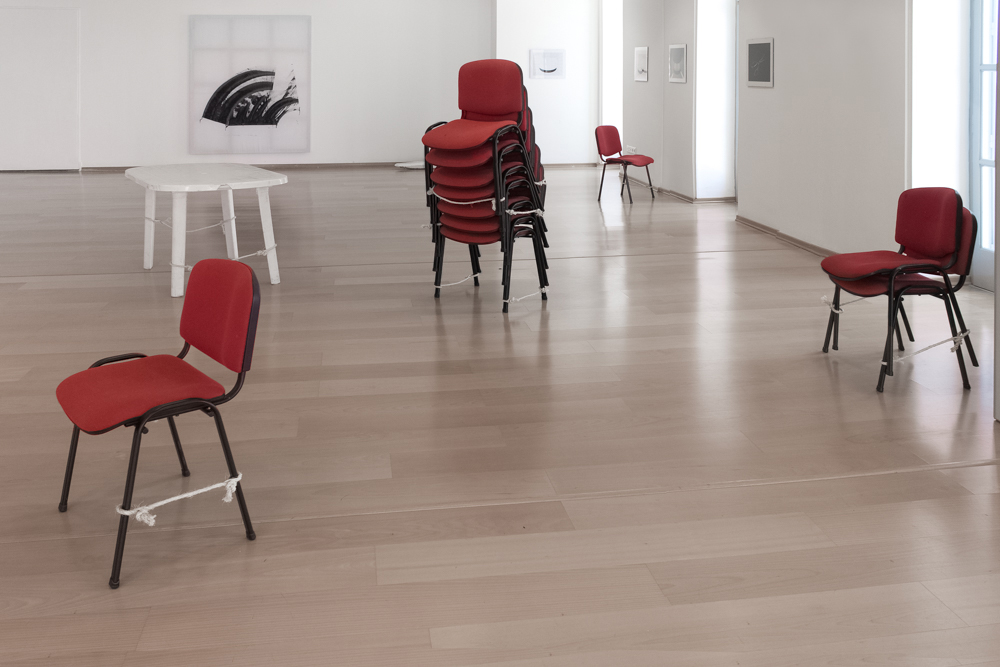
Gerry Bibby's working method is a distinct combination of performance, poetry and sculpture, broadly engaging with the places and people of his close working environment. His extensive writing practice often introduces complex text fragments that are brilliantly interwoven with and imbedded in these operations. His work is the outcome of a great awareness of given situations, into which playful subversions and strategic projections of multifaceted cultural relations are inserted. Against the backdrop of (personal) history, a new definition of artistic processes is called to constant attention, and where action is ready to be taken. Flock is the combination of a performance devised and orchestrated from afar, and a stack of chairs and a table whose legs are bound together with rope in the same way as the sheep of Tinos. Constraints/chains translate into a strong image of use value and property and are interesting when considering the economies of producing, of thinking through the restrictions, but also the perversion of the locations and fixtures for production.
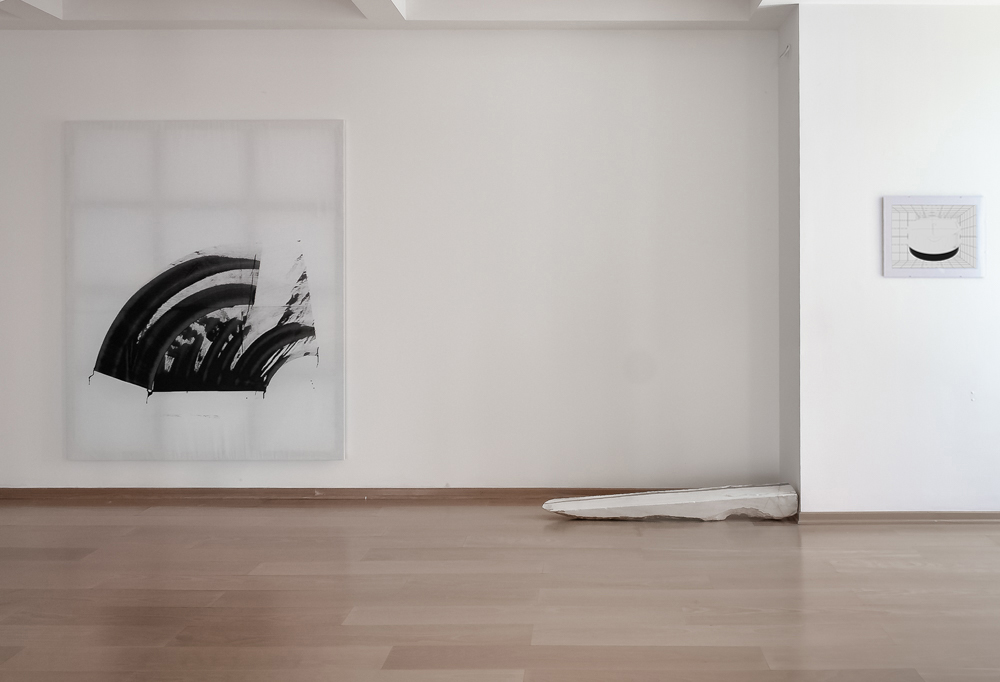
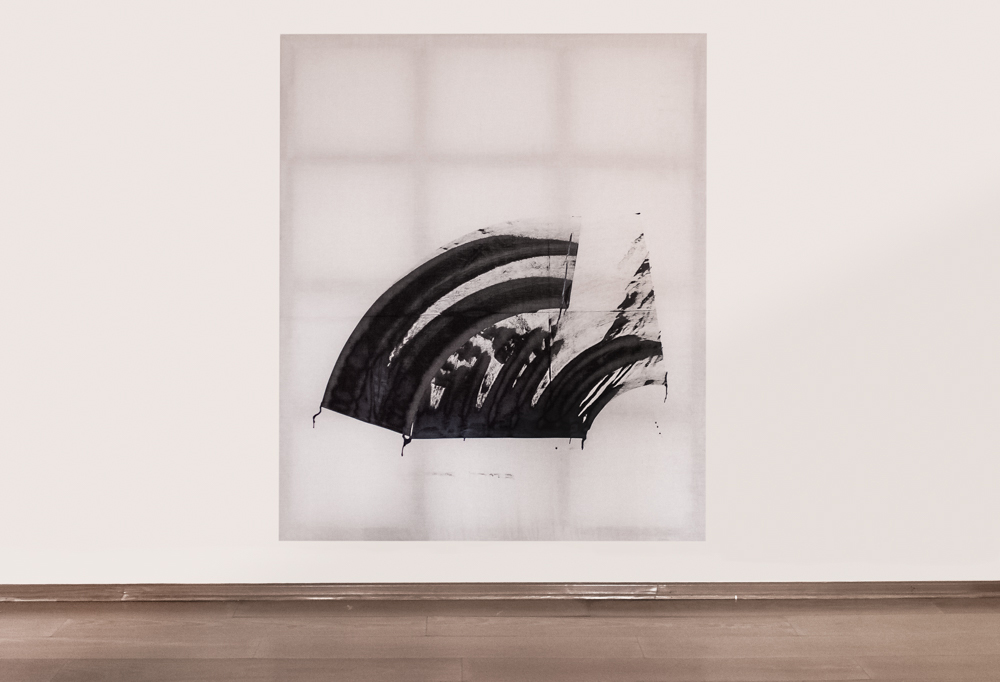
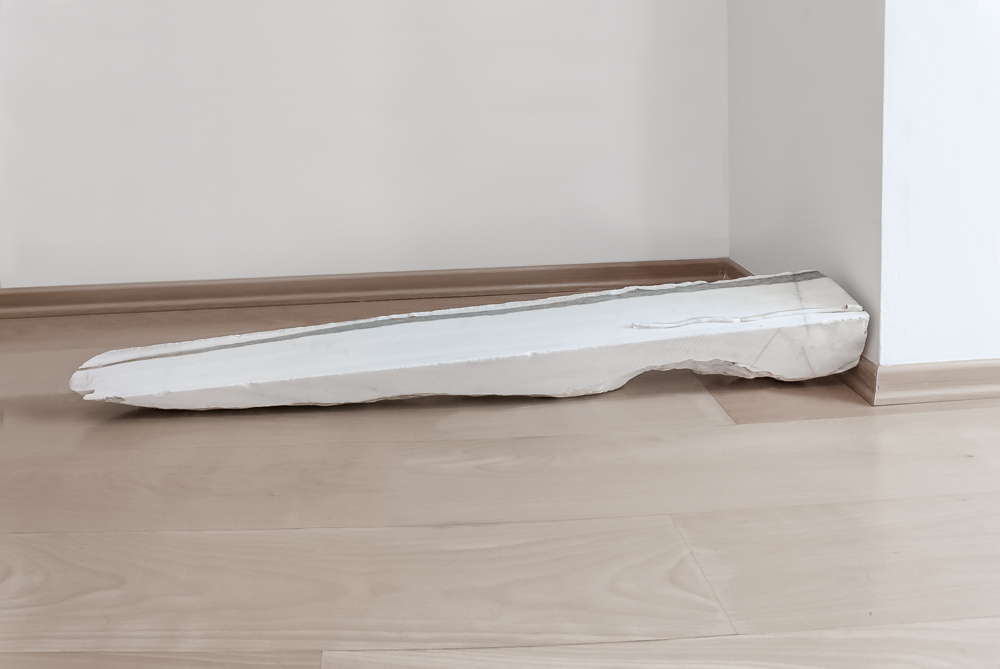
Olga Balema's sculptural work consists of rocks found on the island of Tinos, with small concaves cut into them, and stubs made from epoxy clay that neatly integrate with their formed shelter. Attached to them are mobile phone motors, creating an irrational disturbance. These small vibrations, combined with materials that would "naturally" have little relationship with each other, seem to be put together only to make visible an abstract feeling, a feeling the artist describes as lying somewhere between anxiety and vertigo. Having used stones from exhibited sites in Berlin and L.A. in the past, they speak of a particular place and time, an encounter, synchronized for a short moment.
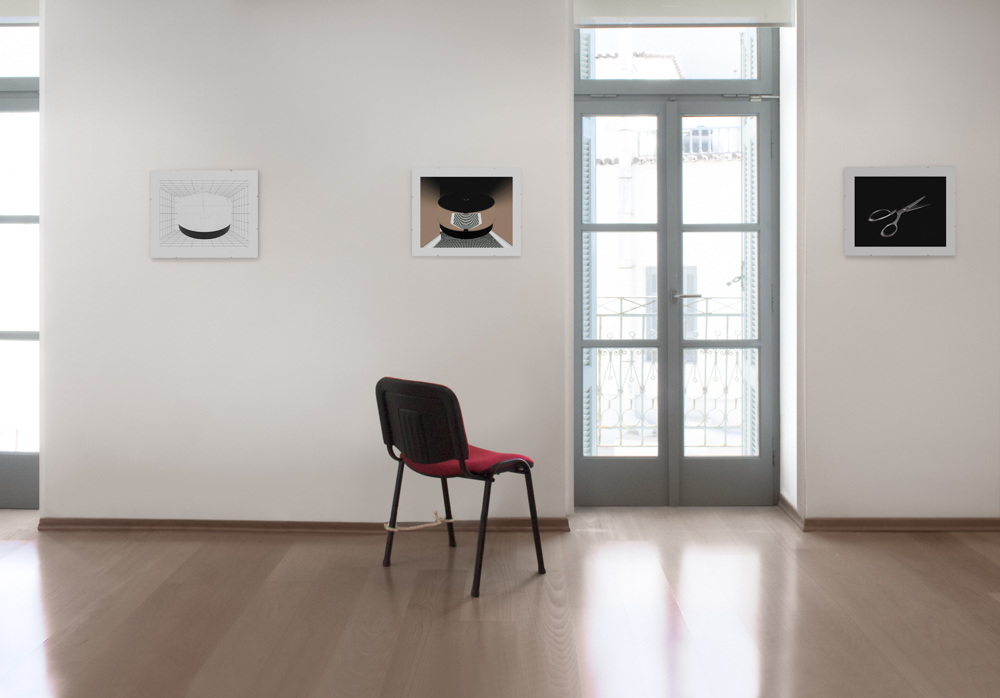
Through the method of computer-rendered images, Emanuel Rossetti has approached questions about forms of representation in past exhibitions. Either abstract outlines of architecture, interiors and objects are brought into perspective in his prints, or their built versions have been turned into reality, considering the individual and collective management of social and ideological spaces. Sometimes, the actual artifacts, originally the models of the rendered images, are seemingly brought into the physical site, and together with soundscapes, create imagined spaces and environments, unearthing the potential of their inscribed realities. Household or designer items, drawn by time, outdated and dysfunctional telephones, or door bells, are shifted into focus to further reflect on purposes of (re)presentation. Removed from their original settings, hyper-real and exaggerated as the images appear, they not only speak of a specific time and reveal their primary use (as well as that of their users), but also juggle with perceptions of ultimate truths, and that of a simulacrum of the lived-in world where an image is created by copying an image that is itself a copy of an image and the real to be searched for beneath its multifaceted abstracts.

Morag Keil's images of collaged posters are composed in a grid. Some are inscribed into an image of actual window frames, playing with the effect of the Trompe-l'œil. That is provoked to an even greater extent by the centred picture of an eye behind a computer screen with a cursor visible. Who is watching or being watched by whom? Through apps like Instagram, pictures are circling around, used and re-used over and over again. Their intrusion into privacy is hardly controllable, on that blurred line where the private opens up to the public. It seems as if the artist is retaking control over those images; once singled out depicting moments of daily activities, here grouped together with another consequent system, to a moment perhaps where life becomes art. In the video work Alexa, the Amazon home automation product with the computerized female voice and the glowing blue circle is rather talkative and asking questions like: Are you going to come and play? or What would you like a conversation about? While surveillance cameras (CCTV) are argued for as devices for security, this product asserts some type of control through care, created for the purpose of assistance in the domestic setting.

In her sculptural work, Maria Georgoula is interested in what may be communicated and translated solely through the abstract form, with only some recognizable found objects, animal parts or figurative elements standing out, while a greater narration is absent. Looking at strangely commodified objects and the merging of diverse forms, contexts and functions, absurdly satirical narratives are composed. What could the possible relationship be between a pig's ear, beads and a bagpipe? The elastic makes its way through the rigid, the common combines with the oddly chosen material and gives way to an arrangement where other possible stories are spread out. Or in her own words: "A lot of these works could be understood through the legacies of early surrealism and the Theatre of the Absurd, but with an emphasis on what may be evoked through the study of form and objects rather than story and language as manifestations of a material polyphony that, despite taking over the everyday, may go unnoticed or be apathetically embraced through its commercial journeys."
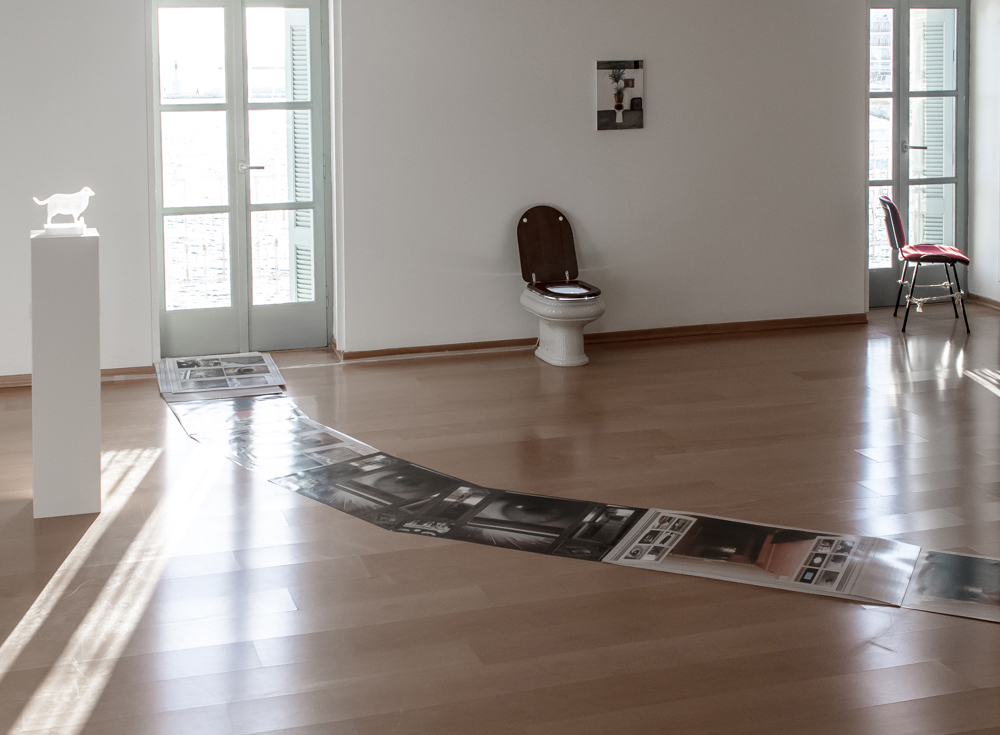


In his work, artist and Tinos Quarry Platform co-founder Petros Touloudis, enables interaction with the local communities and specific environments where the diverse projects take shape. His skilful junctions of art, architecture, film, performance and stage design, all shed light on encounters that contribute to themes of memory and belonging, social relations, "placelessness" and "zones of possibilities." The sculptural work made for this exhibition speaks of an encounter of a different kind, and tells the story of Bella, a sheep that once lived in the village of Isternia, Tinos. One day this sheep, all of a sudden appeared in the village, and decided to become part of a pack of domestic dogs. She chose this different kind of life, not a sheep's life but a dog's, changed her habits, started eating meat and barking, gradually becoming a different animal. Why transform herself to one of the other kind? A monument has now been built, a first study in fact, in memory of her. It is seemingly a portrait of an entirely common sheep, though with a dog's tail, but otherwise not distinguishable as the estranged other, underlining the special case of the flock of sheep, gregarious in nature and with the tendency to congregate close to other members of their group. The work also reflects on the fact that there is no plural for the word "sheep" in English, which contrasts with the case for "dogs." Is this because dogs have more characterized personalities and are considered as different individualities within their social network? Bella is a great paradigm of those two worlds, coming together somehow in that interaction between species, reflecting on the interracial and social values of the other, on community building and gender values. Her life ended kind of dramatically, as she obviously couldn't absorb the dogs' food very well, injecting a bit of drama but also some comedy into the story, establishing her as a one of a kind species.


Art and life and the dissolving boundaries between the public and the private are central to Juliette Blightman's work. Where to distinguish between the two, where does the production process end, and the work begin? Through using a wide palette of media, from writing, painting, and films, to installations and lecture performances, she makes biographical notes of her closest surroundings, relationships between people, of private experiences or intimate situations. In constant dialogue with, and spoken through, (digital) media and its changing factors of time and means of interaction, her work is also about giving back time. In Day 193 an atmosphere of a melancholic retrospective unfolds. A scenery of mixed emotions that coexist side by side. A photograph stuck on the painted canvas depicts a somewhat private moment of a young girl, shot from behind, sitting on a bidet in a bathroom. A large green palm tree growing out of a toilet, a loudspeaker placed next to it refers to an earlier installation work of hers. Blightman's sensible consciousness of precious aspects of time (also owing to the advent of motherhood) creates a phenomenological narration in space and time.
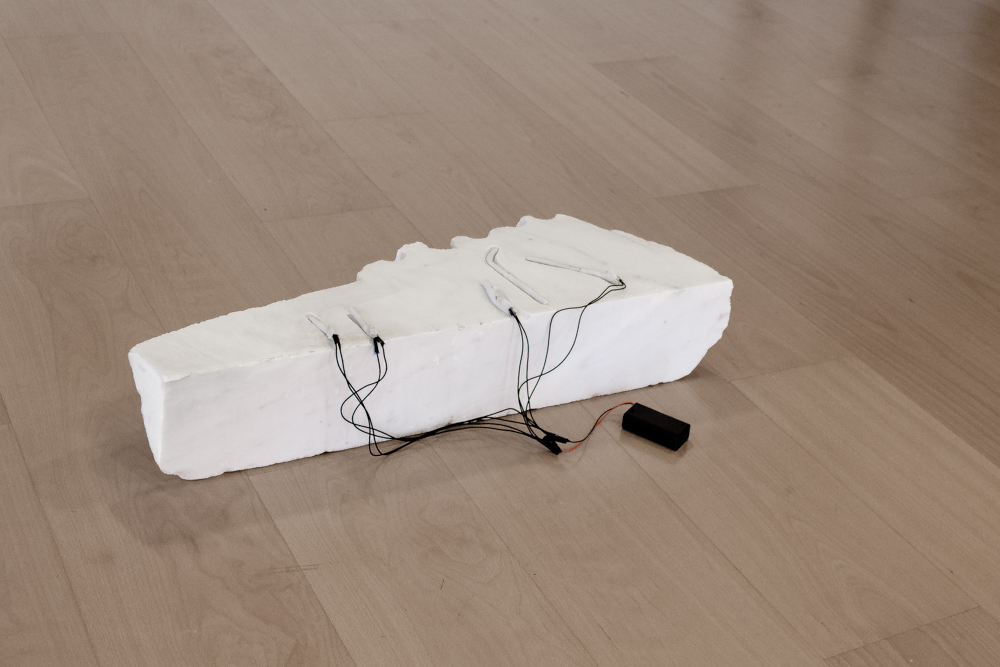


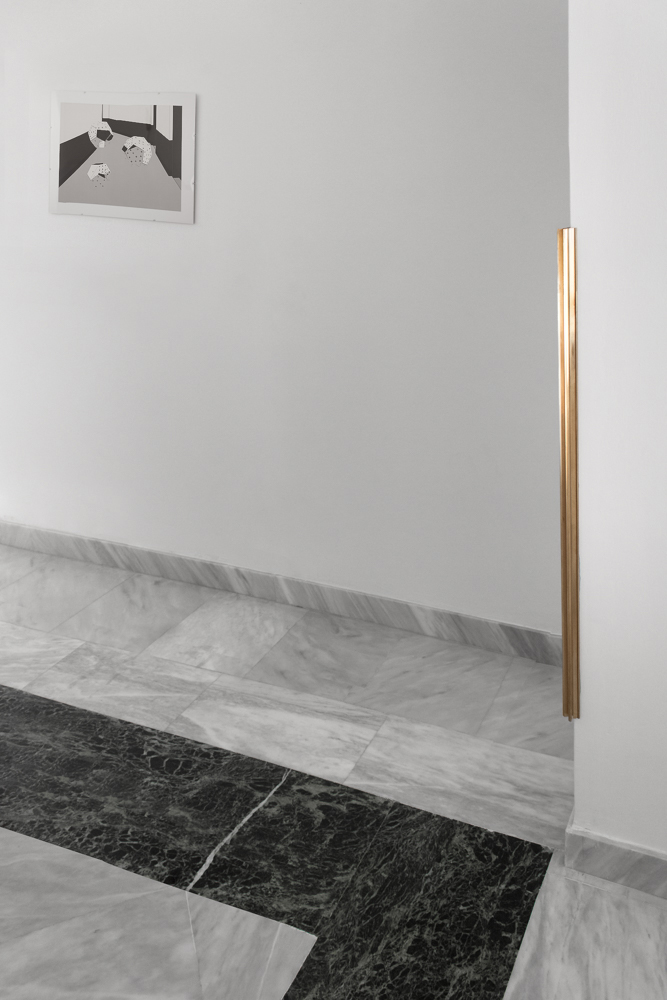
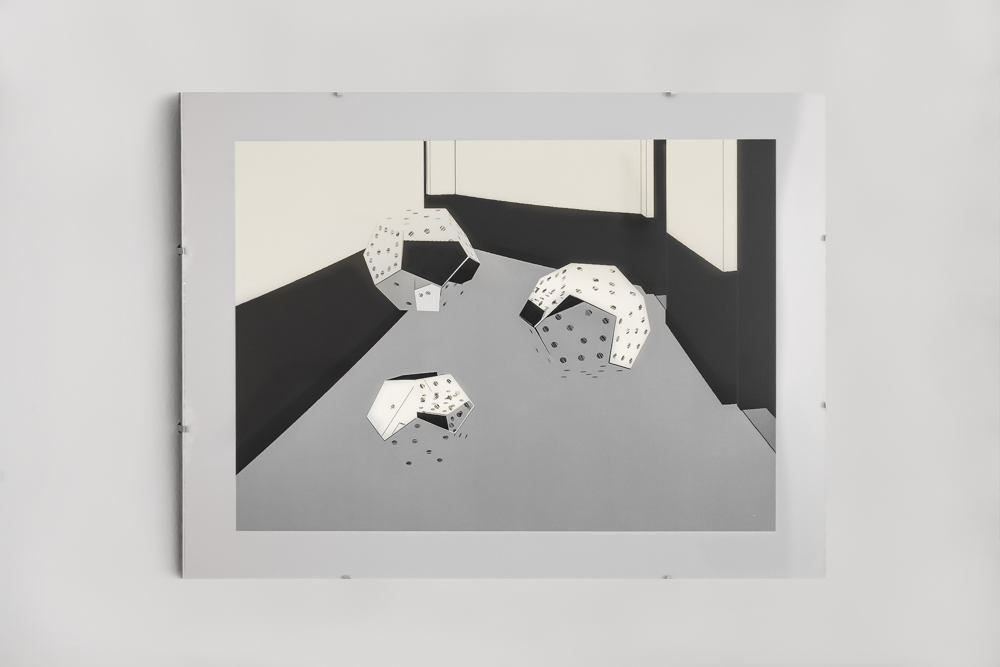
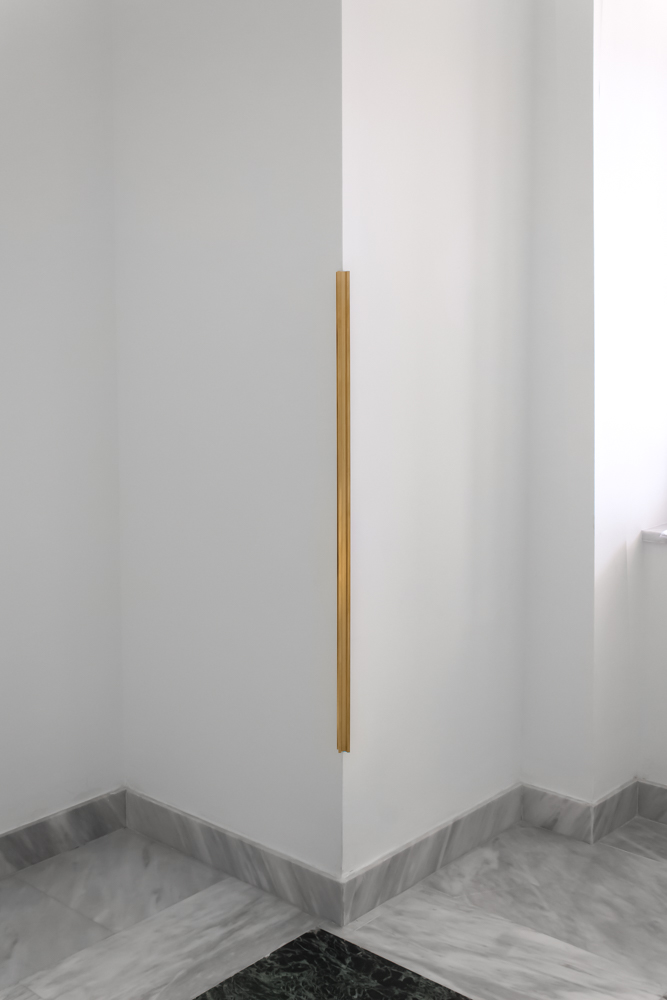


Smoke might be one of the most ancient forms of communication, to signal a warning, call for attention, and also herald decisions. At the same time, it is a vital element of the liturgical use of incense as a symbol of adoration or tribute, as well as defence from baleful forces. Maria Loboda works with a diverse range of materials in their aggregate states of all sorts; found objects, architecture, plants, legends and histories, scientific research, circulating around, carrying stories about the past and the future. When fused together in one space at one time, into one recipe so to speak, all these elements might manifest (un-) wanted appearances of their biting backstories. They might operate like slow-working poisons, as transcendental media, showing their secret lives of power, telling us about our possible desires and fears. Asking questions of how everyday objects, architecture and knowledge affect the human body, our behaviour and relationships. Upon accepting the invitation to this exhibition on a remote island like Tinos, the idea of building a maquette of the island's topography was an immediate approach, as one way to become acquainted with the configurations/conditions of an unknown place from the far distance. The position of the smoking work—small built vessels that are sending out smoke signals—is indicated on the model, pointing towards their actual placement on the island, in the immediate neighbourhood of the artists' temporary residence while setting up the exhibition. What might the smoke be foreboding? An eruption of a volcano, a simple weather change, or a gentle forecast of the end of the affair?


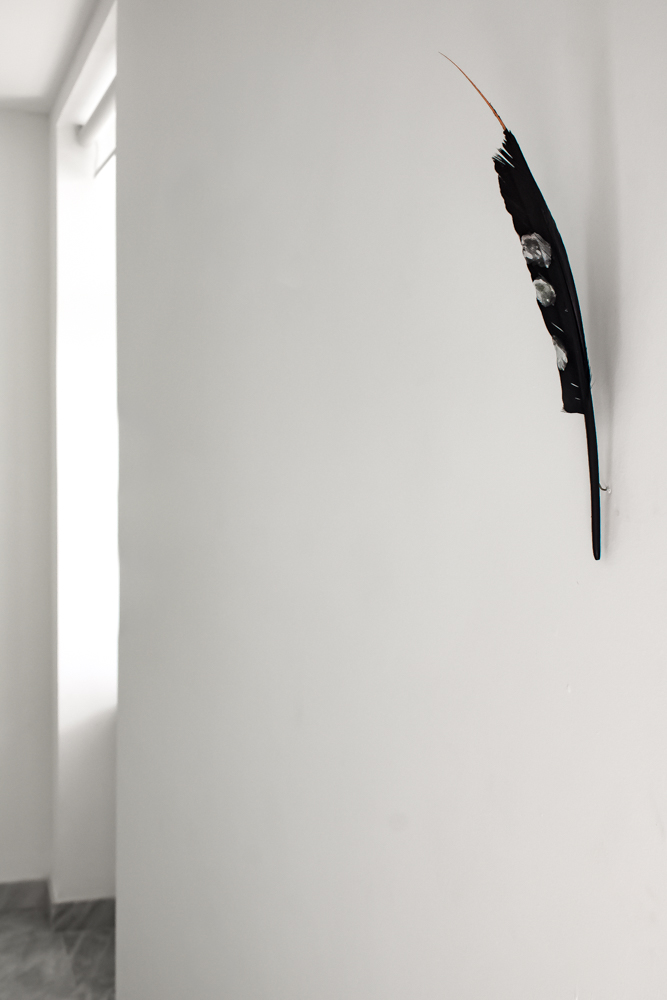


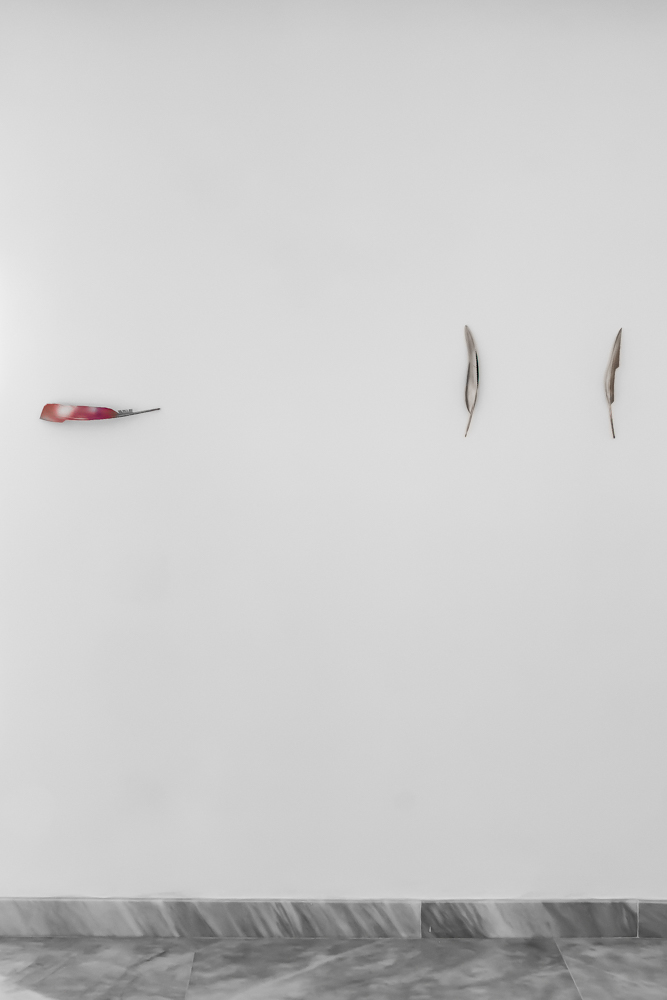
Anders Clausen's two work groups on display, reproductions and reinterpretations of the second prototypic meter bar that was designed in 1867, defined as a fraction of the earth's meridian through Paris, and a collection of bird feathers, treated in a range of different colours, textures, metals, shapes and sizes are examples of scientific research and evolutionary principles with the associated social and political engineering that it takes to set standards for today's status quo. Precision and strength can be attributed to the meters, and as someone wrote earlier about the work: "The public meters of that time can perhaps be likened to the public WiFi of today. One could think that it is the accessibility of these technologies that is responsible for their success. Both the meter and the internet have created a total dependence." In contrast to the rigid meter, presented vertically or horizontally in the room, the feathers might be seen, bending and rather flexible in their form, though artificially manipulated as if to interfere with their naturally processed development over a long period of time.

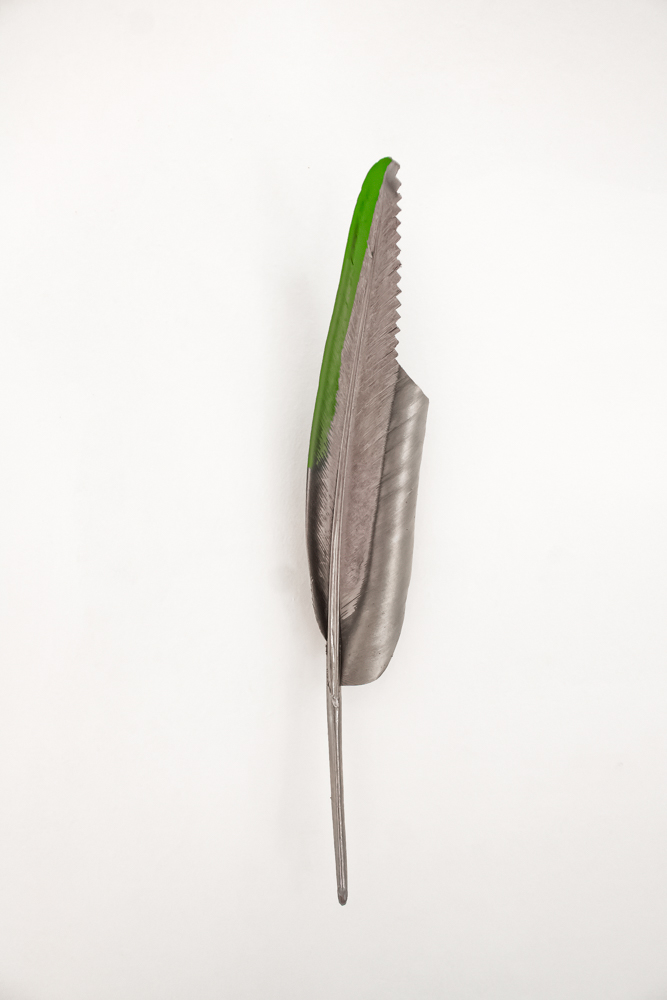


Photos by
Tinos Quarry Platform
Sponsored by
NEON, Alpha Bank, Goethe Institut
2017 — Reassembly

Artists
Adel Abidin (Iraq / Finland / Jordan), G Douglas Barrett (USA), Sari Carel (Israel / USA), Emma Dusong (France), Dora Economou (Greece), Francesco Gagliardi (Italy / Canada), Giorgos Koumendakis (Greece), Alyssa Moxley (USA / Greece), Melody Nixon (New Zealand / USA), Lena Platonos (Greece), Tao G. Vrhovec Sambolec (Slovenia / Netherlands), Raphael Sbrzesny (Germany), Petros Touloudis (Greece), Hong-Kai Wang (Taiwan), Samson Young (Hong Kong)
Designer
We Are Still Bold & Beautiful
Curated by
G Douglas Barrett, Petros Touloudis
Organized by
Tinos Quarry Platform in collaboration with the Cultural Foundation of Tinos
Venue
Cultural Foundation of Tinos, Tinos, Cyclades, Greece
Duration
July 5–October 31, 2017
The free movement of bodies and objects once considered critical for the smooth functioning of contemporary art now appears increasingly uncertain in an era marked by new forms of nationalism, xenophobia, and economic isolationism. Indeed, many artists working in this environment have found it difficult or impossible to cross once unquestionably open borders, or to ship works to and from exhibitions held across a requisitely international stage. Responding to this crisis, Reassembly brings the work of artists from four continents to the Greek island of Tinos through a collaboration between artist, composer, and theorist G Douglas Barrett, artist Petros Touloudis, the Tinos Quarry Platform, and the Cultural Foundation of Tinos.
The artists included in this exhibition incorporate themes of transnationalism and globality in works made through a variety of digitally portable media (video, photography, sound, text) and through practices of scoring, notating, and scripting that formally relate to the musical score. Deracinated from music, the score nevertheless suggests, in this instance, an ability to cross spatial and temporal boundaries through its virtual or immaterial status. Other precedents for these intermedial scripts and instructions can be found in the "event scores" that emerged alongside conceptual art and the 'dematerialized' practices of the 1960s and 70s. Here these forms point not only to a formal fluidity between media, but also broadly reflect a contemporary state of hyperconnected global isolation.
The artists featured in Reassembly draw upon music and various digital (and electronic and analog) media in projects that traverse and transgress national borders, cultural boundaries, linguistic delimitations, temporal markers, and other lines of demarcation. Yet rather than converging on stable definitions of terms like music and media, formally these artworks share with their content a sense of openness and fluidity. Nevertheless these artists engage a number of distinct yet interrelated fields: art and music history, ethnomusicology, urban studies, cultural anthropology, postcolonial studies, and continental philosophy. Together their work speaks to the issues of immigration, spatial mobility, national identity, political economy, gender, sexuality, and cultural hybridity through a range of artistic methodologies.
—G Douglas Barrett

German artist Raphael Sbrzesny's Castel Volturno (2010) stages an homage to those who have tried and failed in their efforts to cross borders, focusing on the economically depressed eponymous Italian township located just north of Naples. The single channel video depicts the artist wading into the sea while repeatedly striking a drum. This drumming, according to Sbrzesny, represents "the manifold voices of migrants who, year by year, try to make their passage across the sea to start a new life in Italy." Entering by the shore, the drummer marches out to sea until fully submerged.


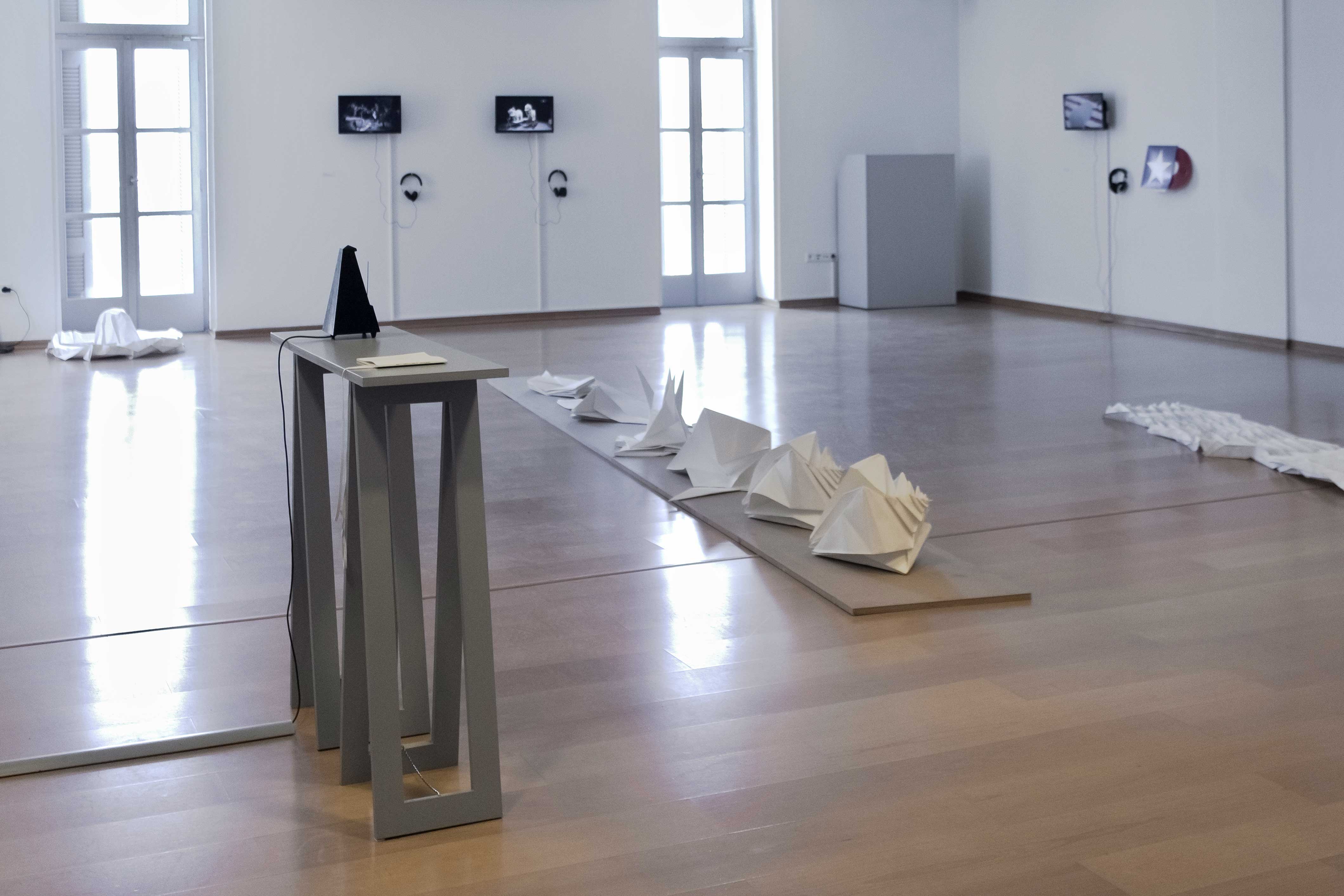
Another form of ambulatory musicality is found in Tao G. Vrhovec Sambolec's Reading Stanley Brouwn (2015–16), an installation that reinterprets a book publication by Dutch conceptual artist Stanley Brouwn (1935–2017) entitled my steps 12.12.2005–1.1.2006 (2014). Brouwn's book consists of twenty-one pages, each containing a date and the number of steps the artist walked that day, covering a total of twenty-one days. In Sambolec's re-reading, the artist recorded each step of a similar series of walks (in a different location) in real time using a digital tracking device. In his installation Sambolec re-encodes each step as a single tick emitted by an electronically modified analog metronome that operates on a matching timeline. That is, the twenty-one days of Sambolec's walks correspond directly to the work as one experiences it during the exhibition. Ultimately, the viewer witnesses a kind of cybernetic reincarnation of Brouwn, digitally retranslated as the artist's own metronome-marked footsteps.
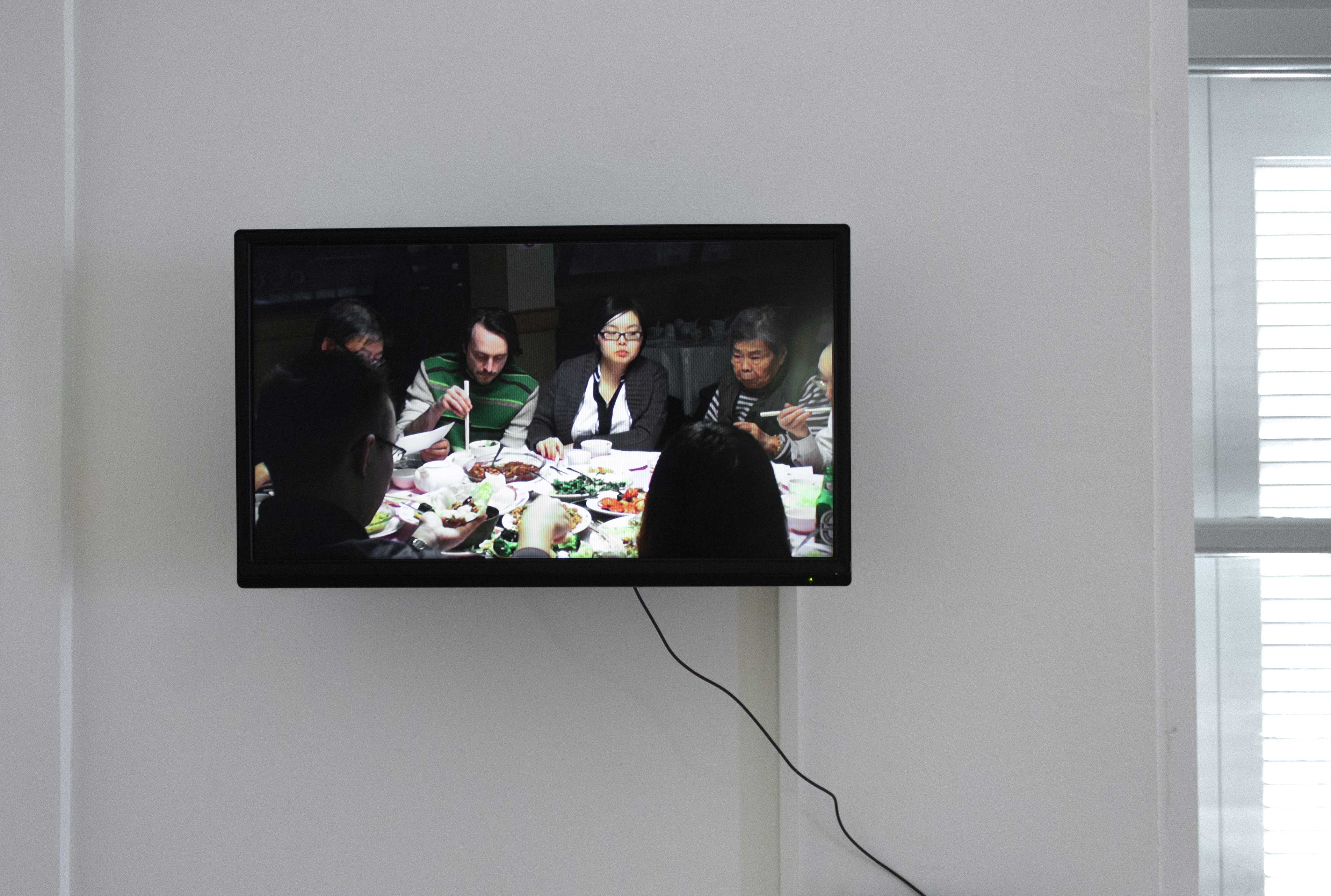
Translation is also a theme in Italian-Canadian artist Francesco Gagliardi's single-channel video Translation #6: Shuang Shuang Yan (2009). The work documents an event in which the artist invited an extended Chinese-Canadian family in Toronto to a dinner party in order to collaboratively translate into English a popular Chinese song from the 1930s. The song plays on a loop in the background as large plates of Chinese food are served. Meanwhile, the family converse with Gagliardi and with each other over the song's potential meanings as the camera slowly revolves around a large circular table. But Gagliardi, who is himself an immigrant and a non-native English speaker, deliberately eschews any sense of a cultural or linguistic center. Through a series of negotiations, hesitations, slippages, and shared uncertainties, he reveals translation as a contingent process that recalls, perhaps, what anthropologist Georgina Born has termed "social improvisation."

Artist Adel Abidin uses the vernacular song to subversively retranslate Iraqi history and its cultural representations through the idioms of Western popular music. In Three Love Songs (2010) Abidin created music videos for propaganda songs commissioned by Saddam Hussein during his time as president of Iraq. The songs are arranged in three different musical styles: 1960s lounge, 1920s jazz, and contemporary pop. Each of the three corresponding videos features a young female singer staged in an atmosphere characteristic of the respective era. The songs are sung in an Iraqi dialect of Arabic. Yet while the video is subtitled in English, the performers, who do not speak Arabic, were instructed to perform the songs as though they were traditional love songs. Abidin thus highlights asymmetries between linguistic access and regimes of representation through the act of musical retranslation.

Hong Kong artist Samson Young's Muted Situations (2014) similarly challenge notions of cultural interiority and authority in a postcolonial context. The series consists of twenty "text scores" that, according to Young, "re-prioritize certain sound layers" of performances, actions, and events. Included here are Muted Classical Quartet 消音弦樂四重奏, a string quartet from the classical era composed, according to Young's instructions, "by a European male composer" and Muted Lion Dance 消音舞獅, the artist's variation of the traditional Chinese custom wherein performers mimic the movements of a lion in sync with percussive drumming. On the one hand, the classical string quartet is defamiliarized by uncovering incidental "non-musical" sounds and choreographical gestures often unique to each string player's sense of musicality. On the other hand, Young contrasts the collectively produced lion dance with a reference to the musical tradition that has historically consolidated authorship almost exclusively to European men.

Continuing a similar thread, Taiwanese artist Hong-Kai Wang in her sound installation The Broken Orchestra (2007) asked nine musicians to individually recreate a twenty three year old cassette tape recording of her brother and herself performing French composer Charles Gounod's 1853 Méditation sur le Premier Prélude de Piano de S. Bach, well-known setting of the Latin text Ave Maria. Ironically, Gounod's work is itself a transcription of the melodic improvisation the composer performed while his future father-in-law played a modified version of Johann Sebastian Bach's Prelude No. 1 in C major (1722). In Wang's multichannel sound work, each of the nine professional musicians was asked to adhere as closely as possible to her cassette tape, attending to the various imperfections of the duet recorded with her brother. Through her iterative recording and transcription process, Wang thus highlights the kind of familial intimacy at once intergenerational and transcultural that often inheres through musical processes of pedagogical transmission.

A different sense of intimacy can be found in Emma Dusong's Ta Voix (2013), a work that consists of two large white pillows containing implanted headphone speakers. The viewer is invited to hold each pillow on either side of her/his head, as illustrated in the accompanying photographs, such that the speakers are heard in stereo. The sound transmitted via the speakers is the artist's own voice, which describes another voice that belonged to a person who has passed away. The voice, Dusong says, "carries its own disappearance." Dusong's work begins with the ostensibly solipsistic gesture of covering one's head with pillows, perhaps as a way of blocking out the world during a time of mourning. Yet the viewer receives not comfort from silence but a sense of disquiet as one voice solemnly points to another's passing.
In Alyssa Moxley's Sound Entangled Spaces (2017) the artist exhibits another kind of passing focusing on sound's potential to communicate across geographically separated spaces. Moxley, an American artist who travels extensively, will be stationed in Athens during the opening of Reassembly. She will begin her performance in Athens by playing back sounds she has collected from some of her many border crossings, island visits, and locations that signify transitional movement. That sound will be transmitted to Tinos where it will combine with room ambience before returning to Athens. Moxley's telepresent feedback loop may also invoke the work of experimental composers like Maryanne Amacher, who beginning in 1968 used sound to connect different spaces in her City Links series. Here Moxley appends further lines of transversal to her network of aurally entangled spaces.



Exploring a related form of spatial biography, author and artist Melody Nixon's Alien #059 ☐☐☐ (2017) consists of a prompt instructing viewers to redact portions of the U.S. Immigration and Nationality Act and the Rights and Responsibilities of a Green Card Holder as displayed on two overhead projectors. Nixon, who often works with American immigrant populations in her pedagogical practice, is herself a New Zealand-born immigrant to the US. Her work encodes literary and artistic forms through a rubric of political engagement. Here Nixon's prompt recalls the text score compositions of experimental music, while her redacted text refers to the literary practice of erasure poetry. By displaying and inviting public revisions to these documents, with which customs and immigrations officers routinely confront immigrants upon arrival in the US, Nixon domesticates and reworks tools otherwise used for the domination and control of already marginalized migrant populations.

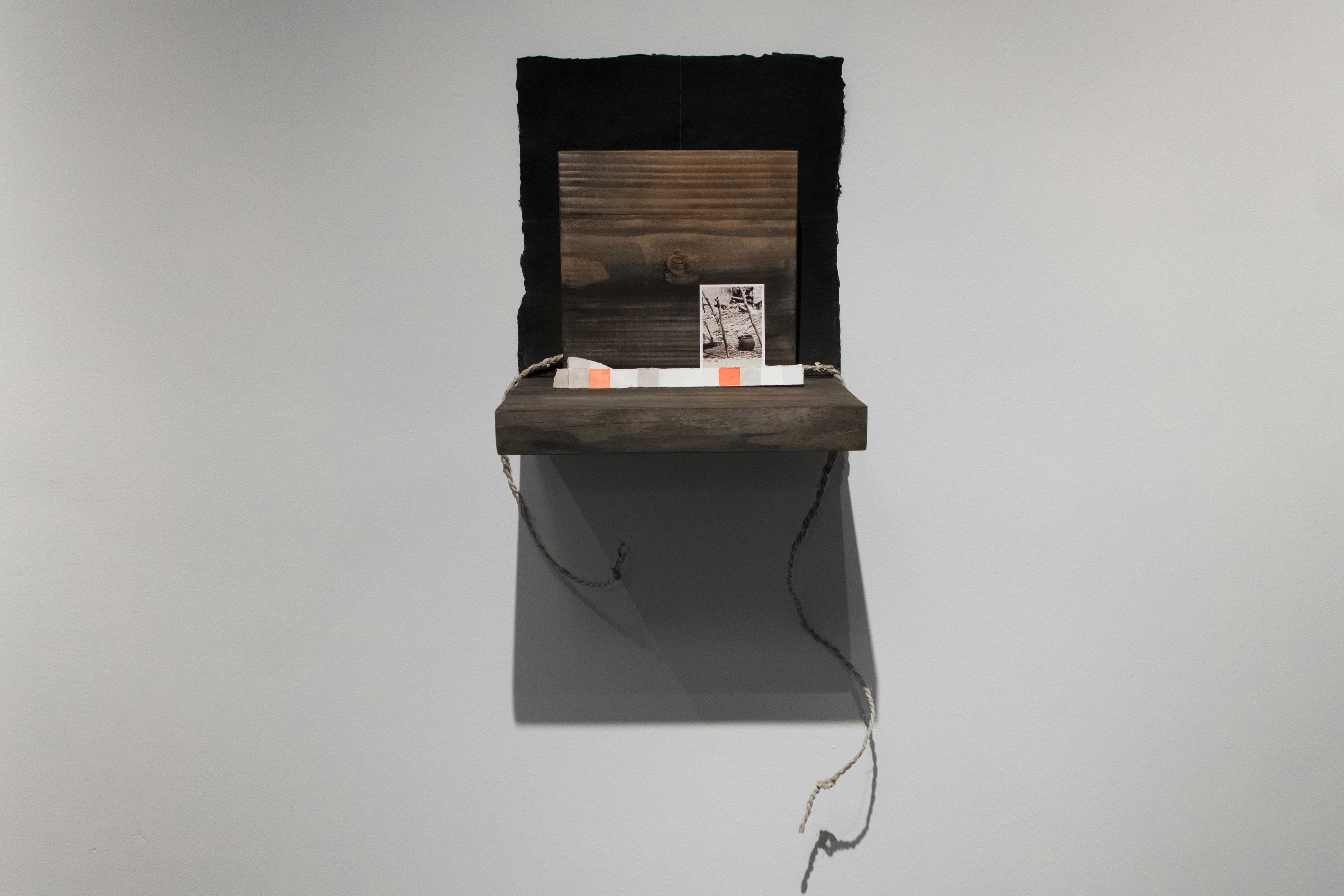
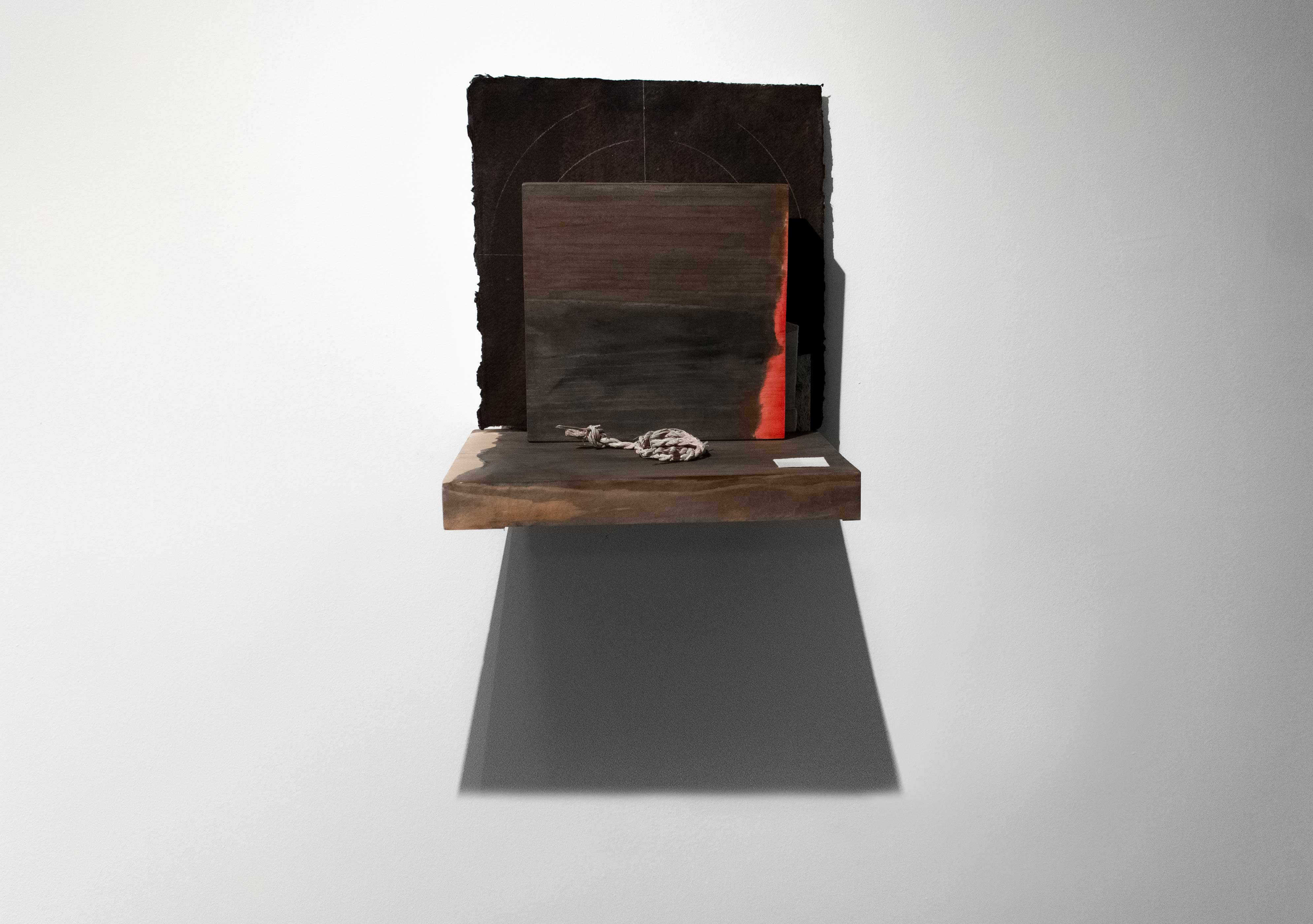

With a different perspective on a similar thread, Israeli-American artist Sari Carel uses zoology and ornithology as tools for excavating the endangered and sometimes extinct histories of human migration. Carel's Migration: Earth and Sky (2017) is a multifaceted intermedia project that unites disparate bodies of artistic, anthropological, and scientific research around the Hula Valley region of northern Israel. These include data analyses of bird migration patterns, an accompanying audio diary, and a series of "research sculptures" that provide partial reconstructions of the craft work found in the pre-Zionist Bedouin villages of the Ghawaraneh tribe. But since no artifacts were left to conserve following the forced depopulation of the Ghawaraneh villages, Carel's sculptures, included here are Earth and Sky, Brief no. 8 (Sitting Mat), Brief no. 9 (An Instrument for Cleaning), and Brief no. 12 (External Wall), provide only a speculative reconstruction of a body of cultural knowledge forced into extinction.

In her electronic music compositions, Greek musician Lena Platonos unites political concerns for contemporary urban issues, including migration, with personal narratives of love and loss. Her watershed 1985 LP, Gallop, for example, includes vocalized commentary on "Rumanian Immigrants" set against her characteristic synth pop textures and electronic dance beats. The album, Platonos notes, was composed in the wake of a painful breakup, an event the composer channelled into broader social and political commentary. According to Platonos, Gallop stands as "a study in the mythology of urban population of the contemporary metropolis and also a gaze into the future life of it." Such a study ultimately represents only a fraction of Platonos's monumental output as an electronic musician, which has been largely overlooked outside of a Greek context.
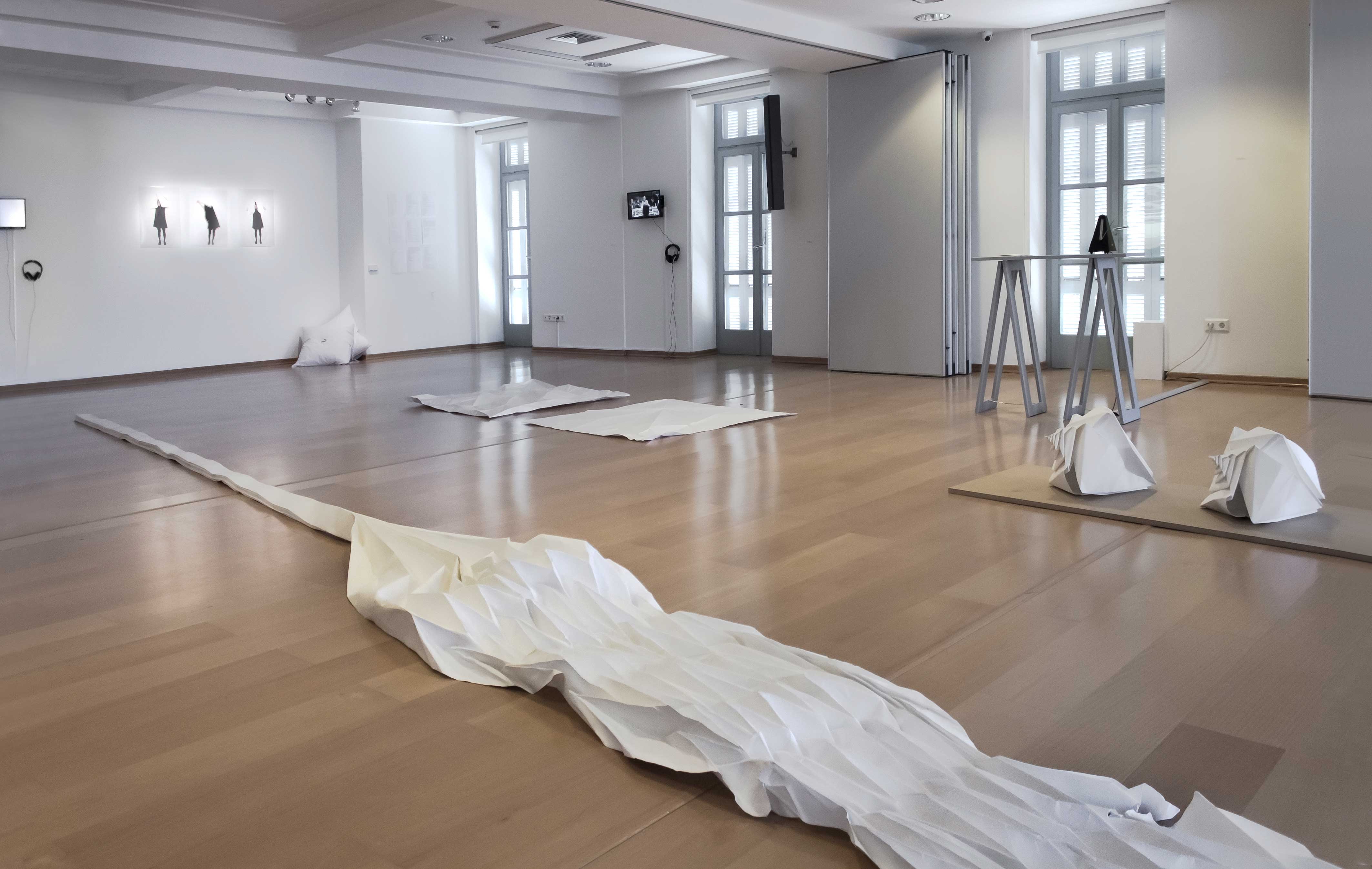
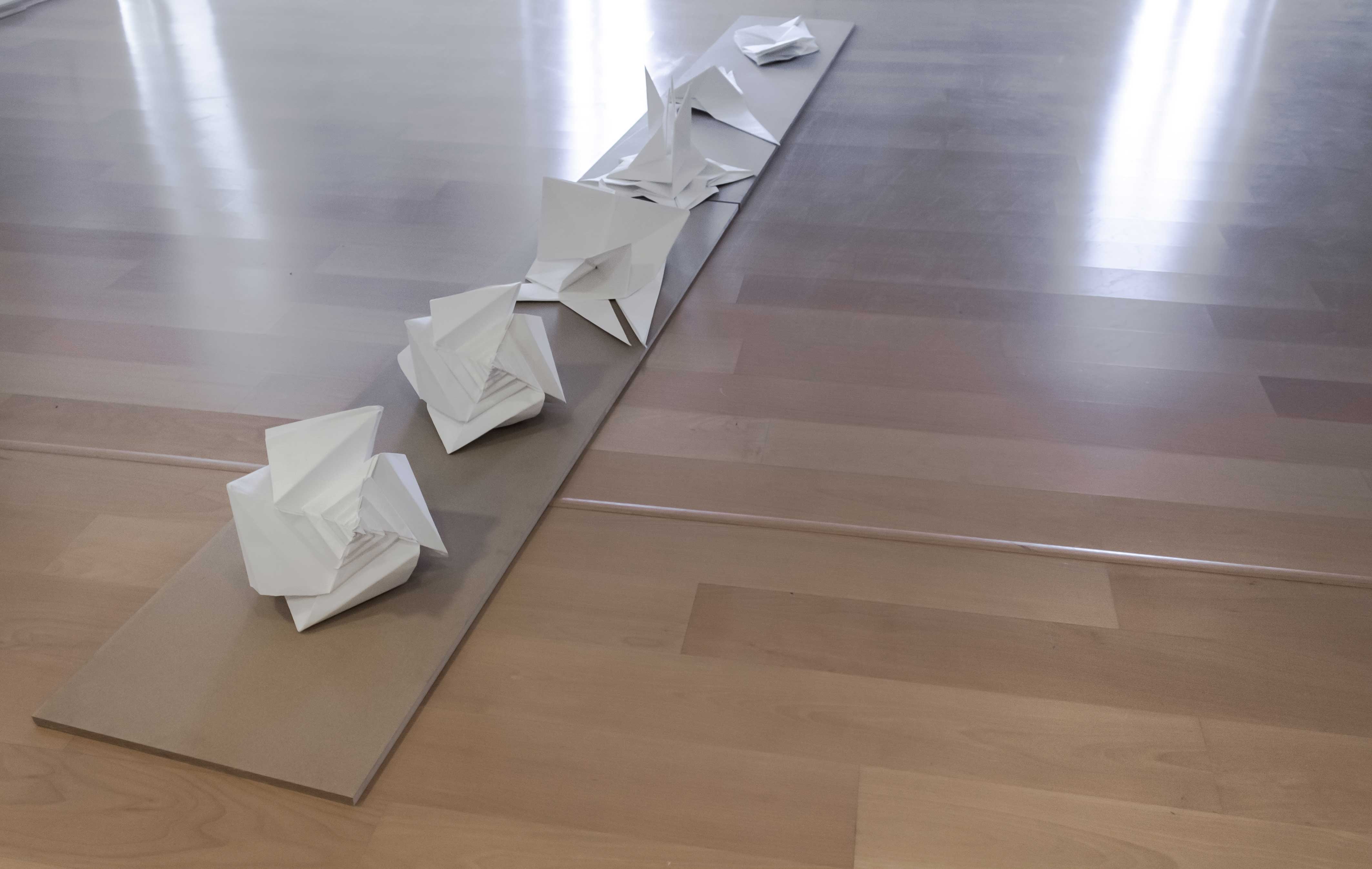

The work of Greek artist Dora Economou speaks to culturally and geographically specific representations of gender and feminism. Economou broadly combines modernist European sculptural practices with influences ranging from the "women's work" movement of the 1970s to the kinds of paper folding found in Japanese origami. In Her Greatest Misses (2017) Economou points to competing layers of cerebral and somatic labor involved in paper folding practices through references to gendered embodiment. Economou stages a series of large-scale folded paper works stretching across the floor of the gallery, which, according to the artist, "takes up almost as much space as the spread out surface of my skin would." Economou describes the process of learning origami techniques by watching YouTube tutorials, noting that such videos typically isolate the tutor's hands thus obscuring gender. In the context of Reassembly's focus on musicality, Economou's work recalls Fluxus artist and composer Ben Patterson whose paper-based performances invoked issues around race within a highly Eurocentric artistic movement. Here Economou similarly reinscribes the (gendered) body through the geometric folds of her contoured white surfaces.
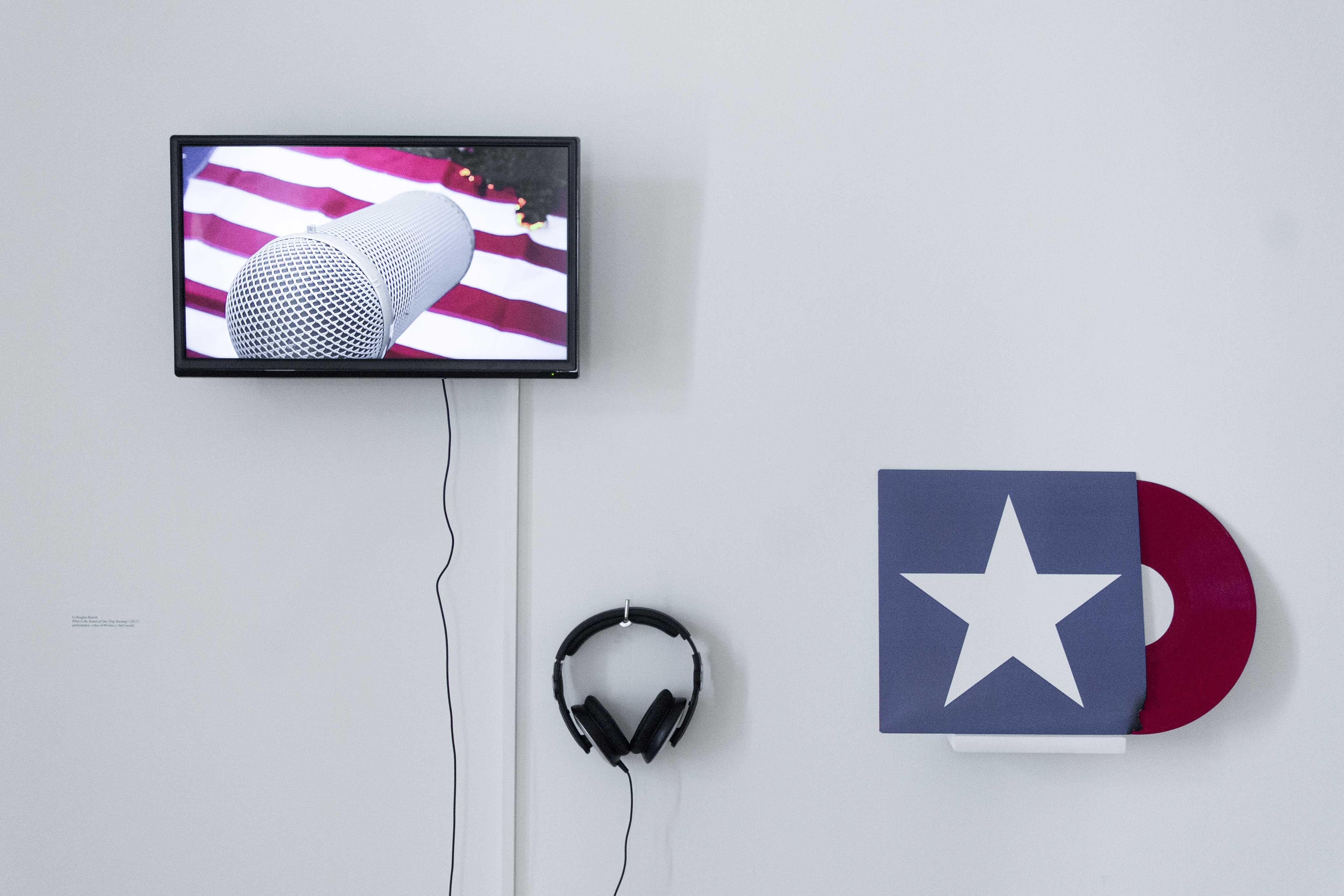
G Douglas Barrett's What is the Sound of One Flag Burning? (2017) is a collaborative vinyl record project that combines political demonstration with philosophical reflection on sound recording technology. In 2016 the artist created an audio recording of a public flag burning in response to rising neonational sentiment in the U.S. and in light of then president-elect's threat to imprison those responsible for a similar event. The project suggests a double homage. Firstly, to American artist Dread Scott's 1988 What is the Proper Way to Display a US Flag?, a work that invited participants to step on an American flag and which prompted President Bush Senior's support of legislation that subsequently prohibited such acts. Secondly, the project alludes to Iannis Xenakis's 1958 work Concrete PH, a musique concrète composition that consists entirely of the sound of a single burning ember. Invoking musique concrète composer Pierre Schaeffer's notion of acousmatics, wherein recordings are imagined as capable of removing all reference to a sound's source, the project asks: to what extent sound can reliably evidence acts of transgression? Side A features Barrett's original flag-burning recording while Side B consists of original works Tobacco and Oil by Reassembly artist Samson Young.


Greek composer Giorgos Koumendakis draws from the legacy of twentieth century graphic notation practices in his Two Poems (1980), a set of two graphic scores for orchestra displayed here as eight framed excerpts. Like works by Cornelius Cardew, John Cage, Iannis Xenakis, and Sylvano Bussotti, Koumendakis's score defines not precise pitches and durations as with traditionally notated music but allows for a range of possible musical interpretations. With each performance such a score receives a new sounding life. In Two Poems, although instruments are defined, Koumendakis provides no instructions or legend for reading the various forms of indeterminate notation. Given only a visual representation of the music, here the spectator alone becomes responsible for imagining the sounding result. The poetry of Two Poems is thus found not in literary meaning but in the suggestive aurality of the page and its musical markings.

Reassembly co-curator Petros Touloudis's A Study for "Mediterranean Desert" (2012) layers the artificial and the natural by reflecting upon the Mediterranean and the long history of cultures shaped by its ebb and flow. Responding to Koumendakis's Mediterranean Desert (1998–2000), a piano cycle meditation on the flora and fauna specific to the Mediterranean, Touloudis attempts to capture a sense of movement and time endemic to the region through the repetitive movement of a wave. Yet what appears initially as a naturalistic image of the ocean is later shown to be pure artifice. Beginning with a close up of a slowly undulating tide, the camera gradually zooms out over the course of the eleven minute video to reveal a small aquatic set Touloudis constructed in a courtyard. The Mediterranean, Touloudis's mise-en-scène suggests, flows both in and through its representations.
Texts
G Douglas Barrett
Photos by
Tinos Quarry Platform, images copyright and courtesy of the artists and Cultural Foundation of Tinos
Sponsored by
NEON
2016 — CURIOSITY

Artists
Giorgos Agallou, Douglas Barrett, Franck Bragigand, Anastasia Douka, Antonín Jirát, Eleni Kamma, Katerina Kana, Ioannis Koliopoulos, Vasiliki Konstantinopoulou, Charalambos Kourkoulis (Photoharrie), Melody Nixon, Paola Palavidi, Dimitris Papadatos, Ilias Papailiakis, Socratis Socratous, Iris Touliatou, Petros Touloudis, Filippos Tsitsopoulos
Curated by
Alexios Papazacharias
Assistant Curator
Stefanos Giannoulis
Organized by
Tinos Quarry Platform artist-in-residency program in collaboration with the Cultural Foundation of Tinos
Venue
Cultural Foundation of Tinos, Tinos, Cyclades, Greece
Duration
July 2–October 31, 2016
Photos by
Photoharrie and collective, images copyright and courtesy of the artists and Cultural Foundation of Tinos
Curiosity 1 is influencing numerous processes. To name a few of them: discovery, innovation, gossiping, research, experimentation and the death 2 of some unfortunate yet certain 3 cats 4. Curiosity and the invitation by Tinos Quarry Platform arrived at the same time 5. Tinos 6 is an island I had never been to before. After giving it a second thought, a third, even a forth and so on, curiosity stayed with me. Curiosity's effects seem unlimited and rather chaotic 7 to narrow down. Google provides an image of it. Curiosity (Περιέργεια) 8 looks like a vehicle, a rover rolling its wheels on planet Mars. Google doesn't lie 9.
Unlike its predecessors looking for specific answers, Curiosity's mission is to produce a clearer image of Mars by collecting a broad variety of data 10. In a similar tone the residency and exhibition are developing around curiosity as a vehicle for broader exploration, thus providing the artists with the complete freedom to create their own methods of approach to the theme.
Tinos is to be explored by invited artists, sharing different familiarity levels with the island. Some live abroad, some are Greek, some have been in Greece, some have never visited before, some reside on the island, others visit on an annual basis. Levels of familiarity function for curiosity like different settings on a microscope or a telescope, depending on what one is planning to study.
-
If the knowledge of ill can reward the industrious search with so much delight and pleasure, turn the point of thy curiosity upon thyself and thine own affairs, and thou shalt within doors find matter enough for the most laborious enquiries, plentiful as Water in Aliso's stream, or leaves about the oak.
-
"Curiosity killed the cat" is a proverb used to warn of the dangers of unnecessary investigation or experimentation. A less frequently-seen rejoinder to "curiosity killed the cat" is "but satisfaction brought it back." The original form of the proverb, now little used, was "Care killed the cat." In this instance, "care" was defined as "worry" or "sorrow."
-
Schrödinger's cat is a thought experiment, sometimes described as a paradox, devised by Austrian physicist Erwin Schrödinger in 1935. It illustrates what he saw as the problem of the Copenhagen interpretation of quantum mechanics applied to everyday objects. The scenario presents a cat that may be simultaneously both alive and dead, a state known as a quantum superposition, as a result of being linked to a random subatomic event that may or may not occur. The thought experiment is also often featured in theoretical discussions of the interpretations of quantum mechanics. Schrödinger coined the term Verschränkung (entanglement) in the course of developing the thought experiment.
Schrödinger's cat: a cat, a flask of poison, and a radioactive source are placed in a sealed box. If an internal monitor detects radioactivity (i.e., a single atom decaying), the flask is shattered, releasing the poison that kills the cat. The Copenhagen interpretation of quantum mechanics implies that after a while, the cat is simultaneously alive and dead. Yet, when one looks in the box, one sees the cat either alive or dead, not both alive and dead. This poses the question of when exactly quantum superposition ends and reality collapses into one possibility or the other.
-
According to a myth in many cultures, cats have multiple lives. In many countries, they are believed to have nine lives, but in Italy, Germany, Greece, Brazil and some Spanish-speaking regions, they are said to have seven lives, while in Turkish and Arabic traditions, the number of lives is six. The myth is attributed to the natural suppleness and swiftness cats exhibit to escape life-threatening situations. Also lending credence to this myth is the fact that falling cats often land on their feet, using an instinctive righting reflex to twist their bodies around. Nonetheless, cats can still be injured or killed by a high fall.
-
What time is now?
7:49 PM
Wednesday, June 29, 2016 (GMT+3)
Time in Mesaria -
Tinos (Greek: Τήνος [ˈtinos]) is a Greek island situated in the Aegean Sea. It is located in the Cyclades archipelago. In antiquity, Tinos was also known as Ophiussa (from ophis, Greek for snake) and Hydroessa (from hydor, Greek for water). The closest islands are Andros, Delos, and Mykonos. It has a land area of approximately 194 square kilometres (75sq m) and a 2011 census population of 8,636 inhabitants. Tinos is famous amongst Greeks for the Church of Panagia Evangelistria, its 80 or so windmills, about 1000 artistic dovecotes, 50 active villages and its Venetian fortifications at the mountain, Exomvourgo. On Tinos, both Greek Orthodox and Roman Catholic populations co-exist, and the island is also well known for its famous sculptors and painters, such as Nikolaos Gysis, Yannoulis Chalepas and Nikiforos Lytras. The island is located near the geographical center of the Cyclades island complex, and because of the Panagia Evangelistria church, with its reputedly miraculous icon of Virgin Mary that it holds, Tinos is also the center of a yearly pilgrimage that takes place on the date of the Dormition of the Virgin Mary (15 August, "Dekapentavgoustos" in Greek). This is perhaps the most notable and still active yearly pilgrimage in the region of the eastern Mediterranean. Many pilgrims make their way the 800 metres (2,600 feet) from the ferry wharf to the church on their hands and knees as sign of devotion.
-
Chaos theory is the field of study in mathematics that studies the behavior of dynamical systems that are highly sensitive to initial conditions—a response popularly referred to as the butterfly effect. Small differences in initial conditions (such as those due to rounding errors in numerical computation) yield widely diverging outcomes for such dynamical systems, rendering long-term prediction impossible in general. This happens even though these systems are deterministic, meaning that their future behavior is fully determined by their initial conditions, with no random elements involved. In other words, the deterministic nature of these systems does not make them predictable. This behavior is known as deterministic chaos, or simply chaos. The theory was summarized by Edward Lorenz as:
Chaos: When the present determines the future, but the approximate present does not approximately determine the future.
The butterfly effect is the concept that small causes can have large effects. Initially, it was used with weather prediction but later the term became a metaphor used in and out of science.
-
Curiosity is a car-sized robotic rover exploring Gale Crater on Mars as part of NASA's Mars Science Laboratory mission (MSL). As of June 29, 2016, Curiosity has been on the planet Mars for 1385 sols (1423 total days; 3 years, 328 days) since landing on August 6, 2012. Since September 11, 2014, Curiosity has been exploring the slopes of Mount Sharp, where more information about the history of Mars is expected to be found. As of February 4, 2016, the rover has traveled over 7.4 km (4.6 mi) to, and around, the mountain base since leaving its "start" point in Yellowknife Bay on July 4, 2013. Curiosity's design will serve as the basis for the planned Mars 2020 rover. In December 2012, Curiosity's two-year mission was extended indefinitely.
Περιέργεια is the greek word for curiosity. It derives from the words πέρι and έργον that mean about and work respectively.
-
A lie is a statement that the stating party believes to be false and that is made with the intention to deceive. The practice of communicating lies is called lying, and a person who communicates a lie may be termed a liar. Lies may be employed to serve a variety of instrumental, interpersonal, or psychological functions for the individuals who use them. Generally, the term "lie" carries a negative connotation, and depending on the context a person who communicates a lie may be subject to social, legal, religious, or criminal sanctions. In certain situations, however, lying is permitted, expected, or even encouraged. Believing and acting on false information can have serious consequences.
For a typical query, there are thousands, if not millions, of webpages with helpful information. Algorithms are the computer processes and formulas that take your questions and turn them into answers. Today Google's algorithms rely on more than 200 unique signals or "clues" that make it possible to guess what you might really be looking for. These signals include things like the terms on websites, the freshness of content, your region and PageRank.
-
Objectives
Mars Science Laboratory: Mission Objectives
To contribute to the four science goals and meet its specific goal of determining Mars' habitability, Mars Science Laboratory has the following science objectives.
Biological objectives
- Determine the nature and inventory of organic carbon compounds
- Inventory the chemical building blocks of life (carbon, hydrogen, nitrogen, oxygen, phosphorous, and sulfur)
- Identify features that may represent the effects of biological processes
Geological and geochemical objectives
- Investigate the chemical, isotopic, and mineralogical composition of the martian surface and near-surface geological materials
- Interpret the processes that have formed and modified rocks and soils
Planetary process objectives
- Assess long-timescale (i.e., 4-billion-year) atmospheric evolution processes
- Determine present state, distribution, and cycling of water and carbon dioxide
Surface radiation objective
- Characterize the broad spectrum of surface radiation, including galactic cosmic radiation, solar proton events, and secondary neutrons
Goals
Mars Science Laboratory: Mission Goals
- Determine whether life ever arose on Mars
- Characterize the climate of Mars
- Characterize the geology of Mars
- Prepare for human exploration
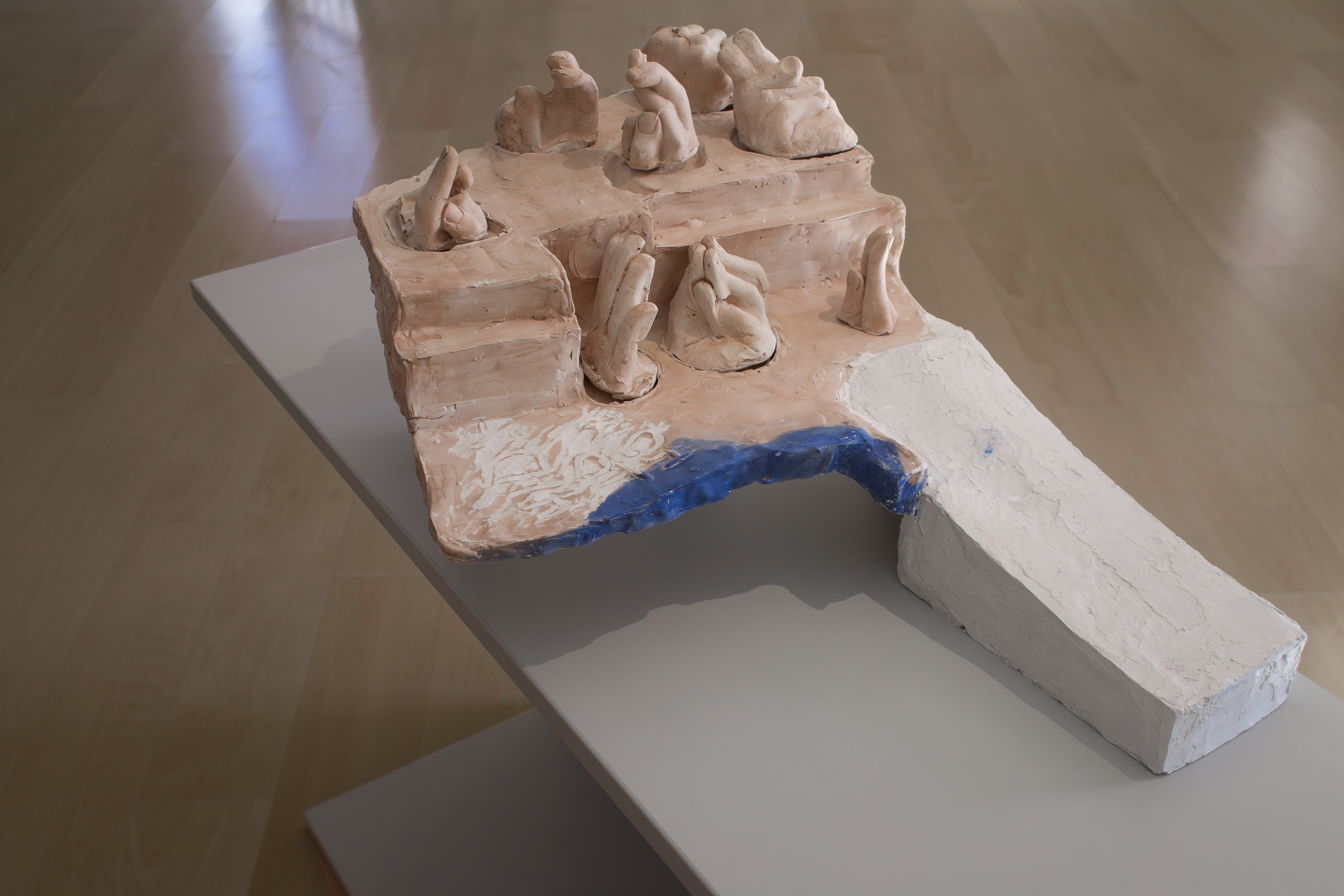




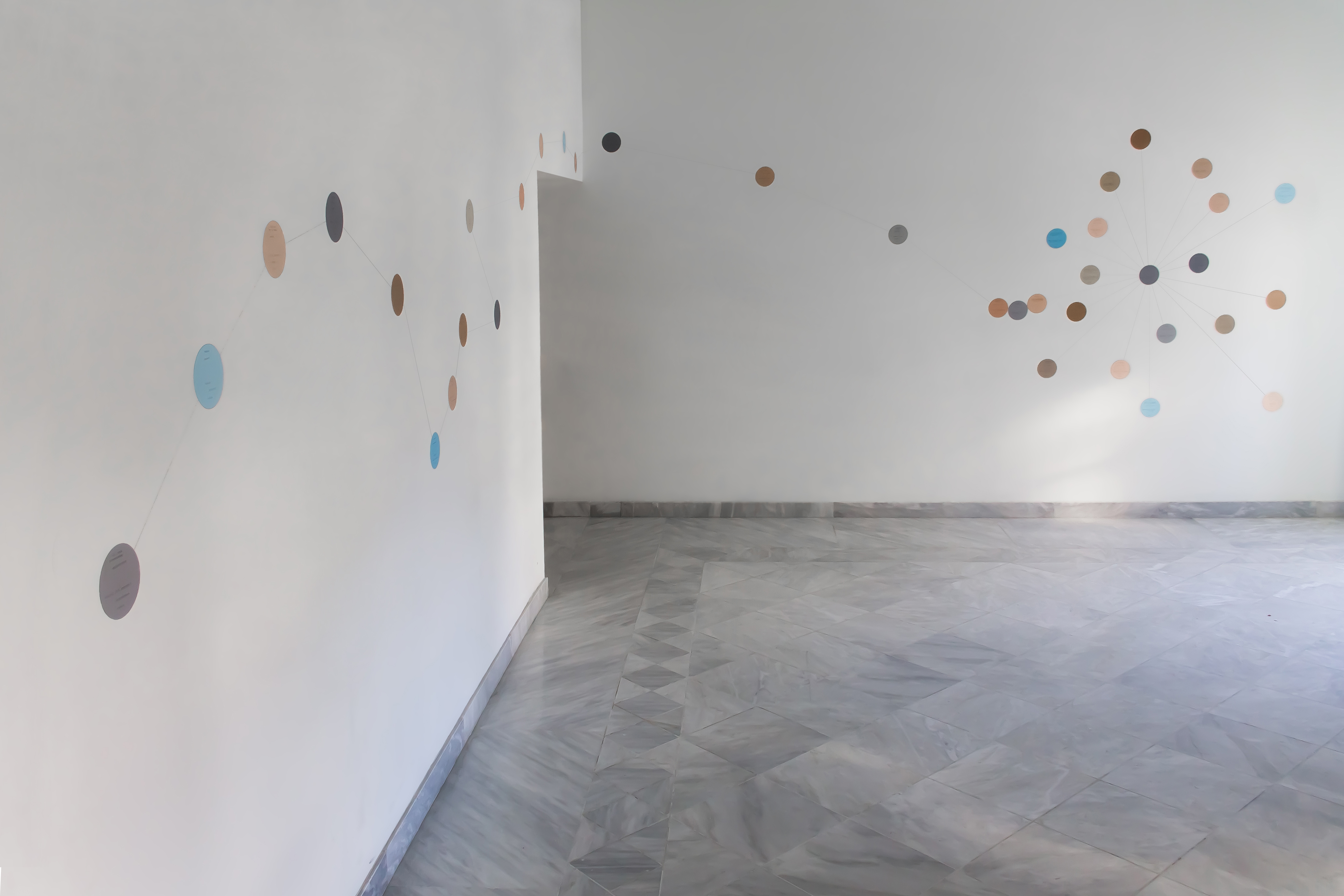

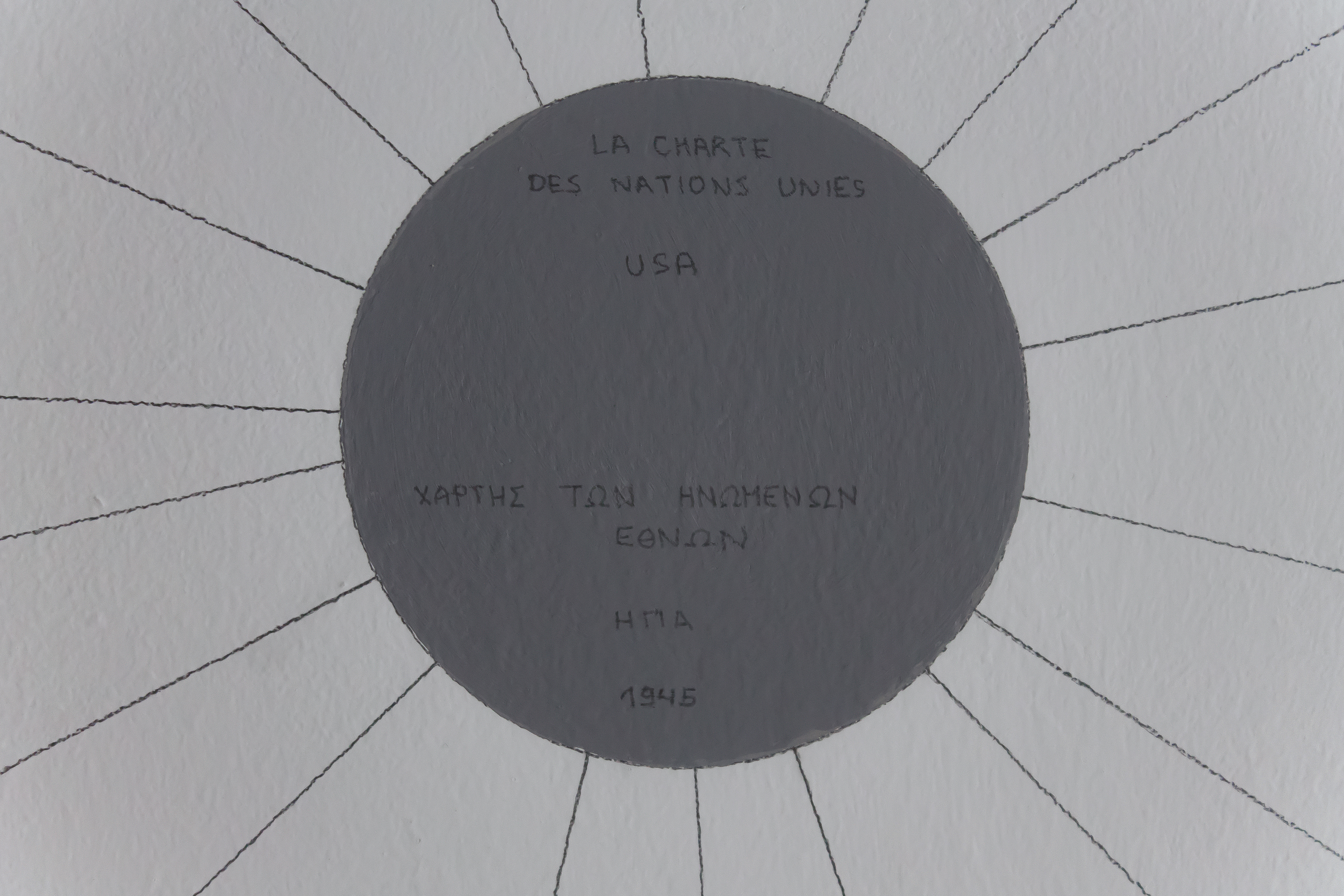


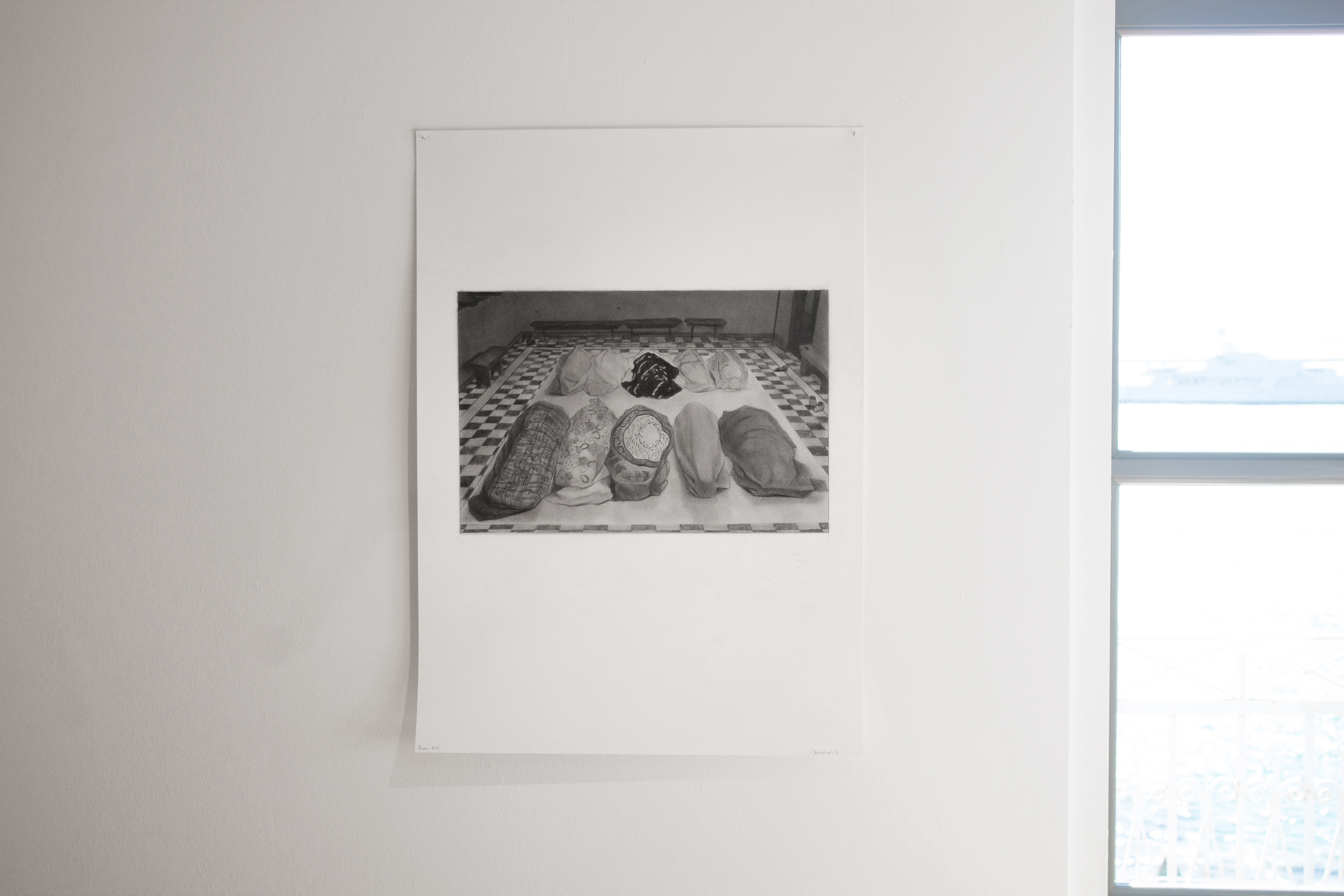
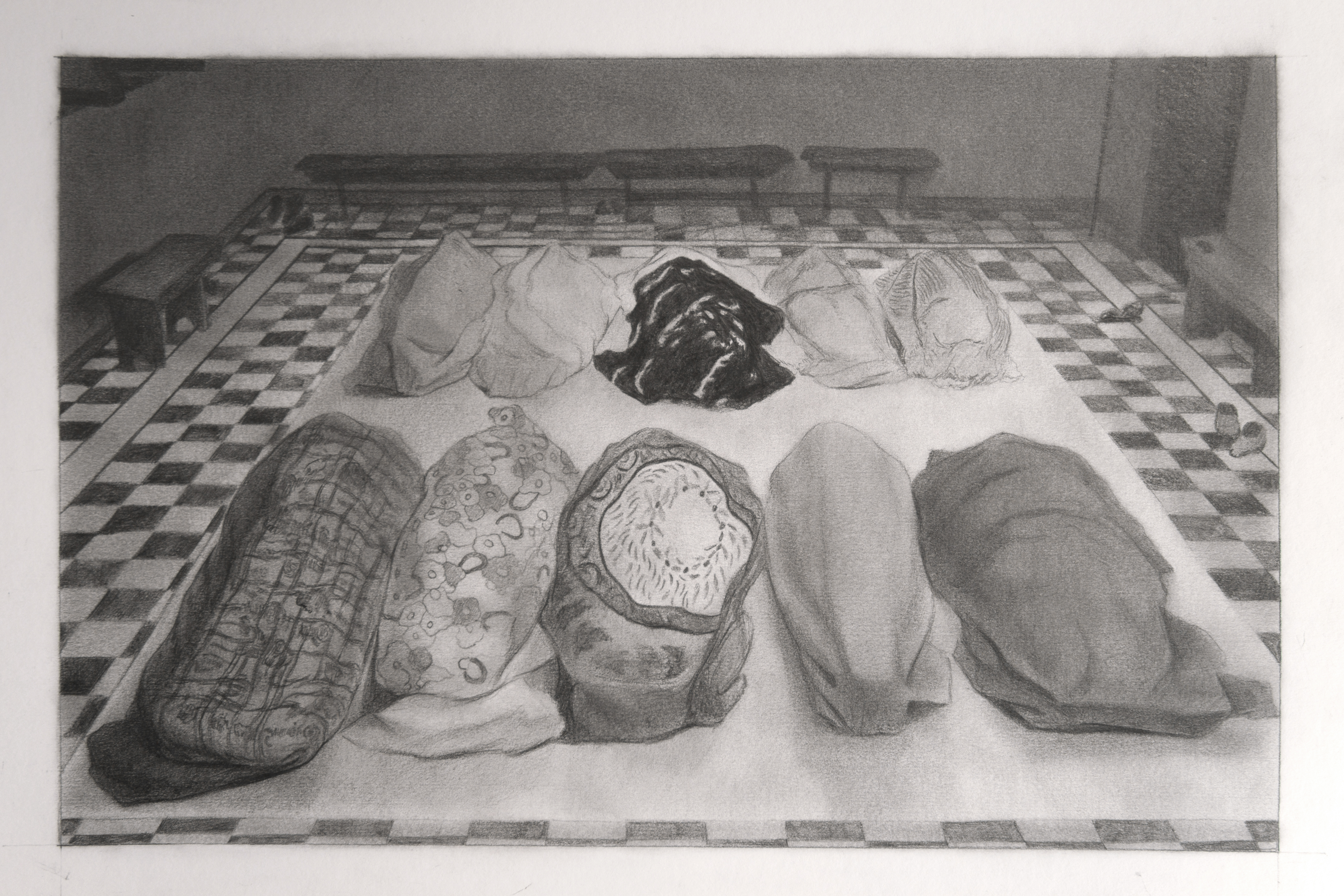
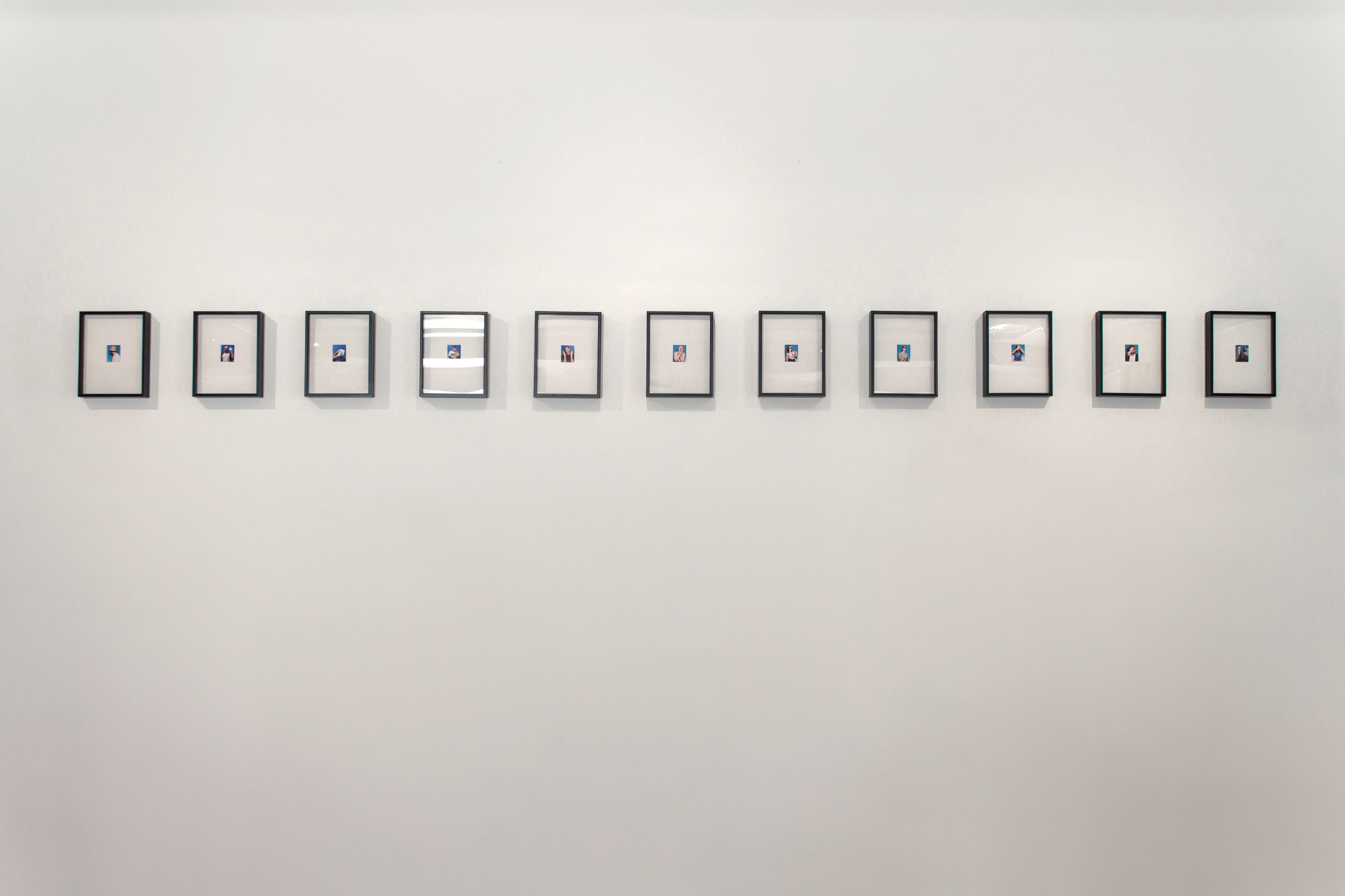







The work frames questions around artistic authorship through different historical contexts for considering gender and identity. In response to Arnold Schoenberg's scolding letter protesting the female voice contained on a 1950 vinyl record of the composer's Ode to Napoleon (1942), this record presents two "transcriptions" of the work for transgender performers.
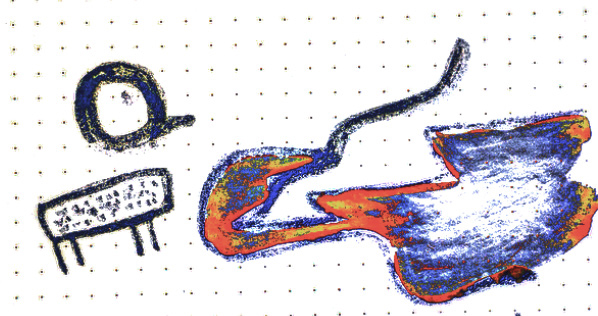
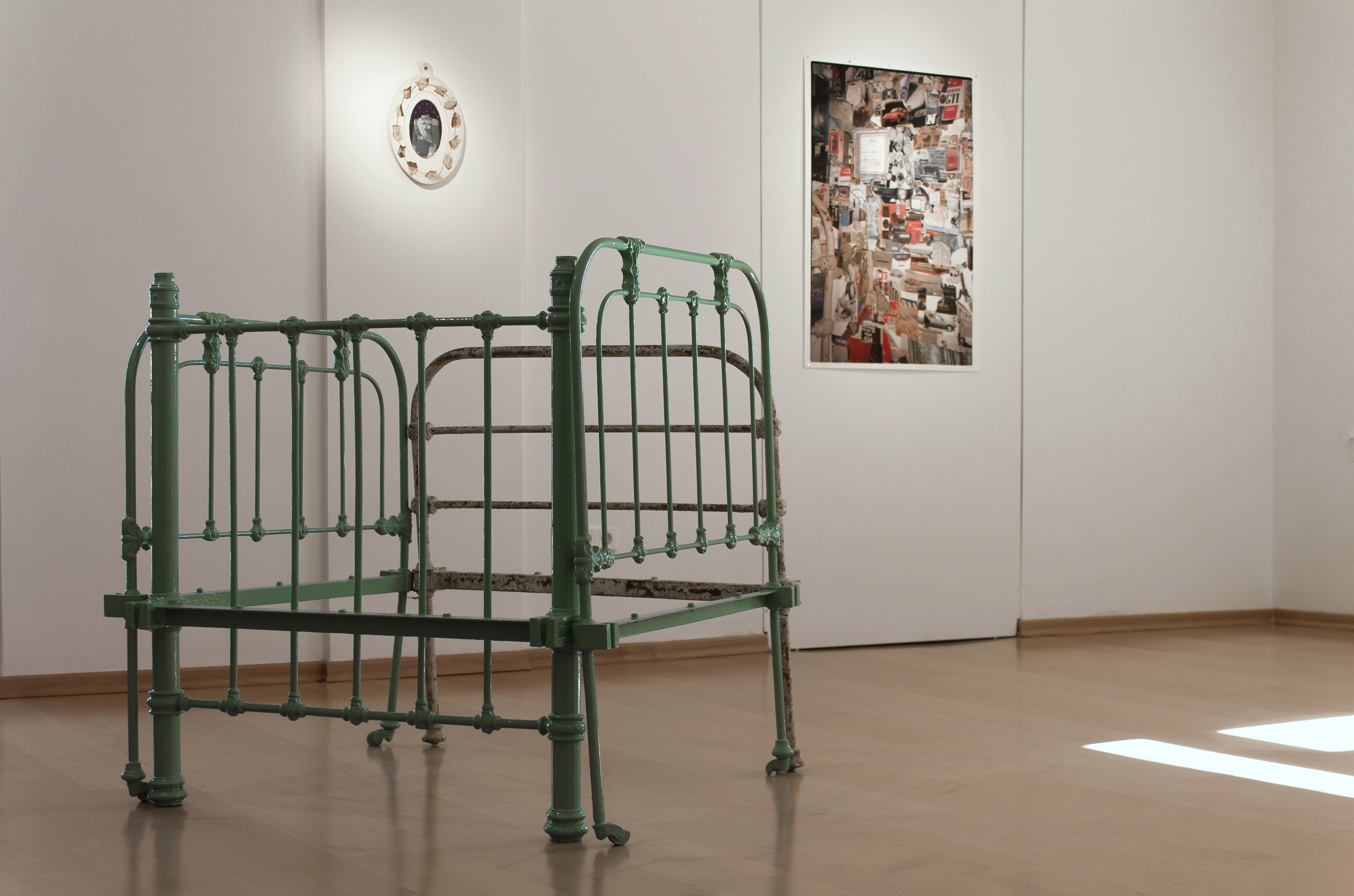



Secular Properties is a project that initially started in 2015. The project is about a proposal of the artist to the municipality of Tinos island, regarding the construction of an amphitheater at the court yard of the former primary school of Isternia village. This project grasps the idea of a theater as a public sculpture in the location and it is organically connected to the TQP, as an open invitation to a "collaborative" sculpture.



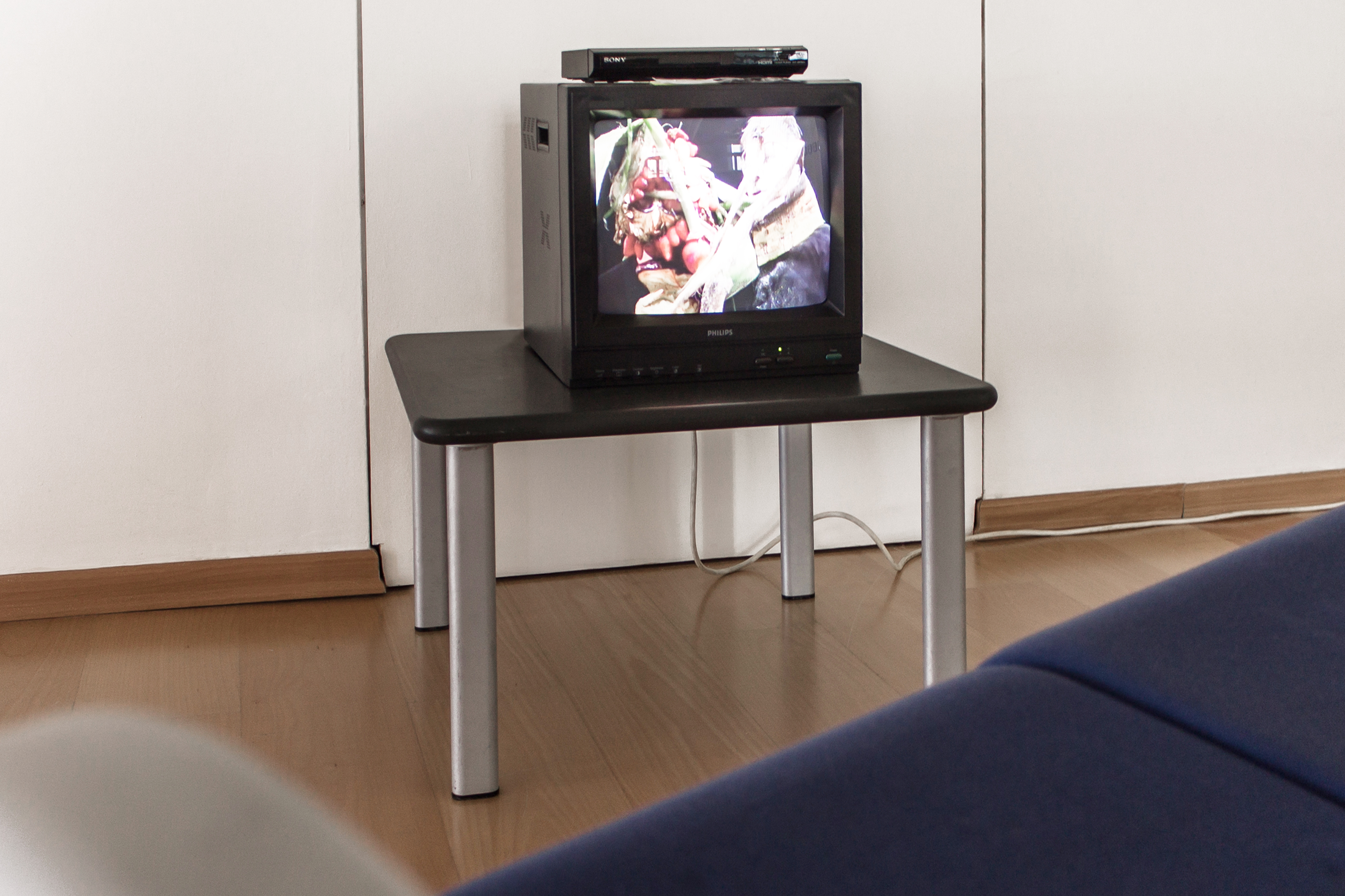
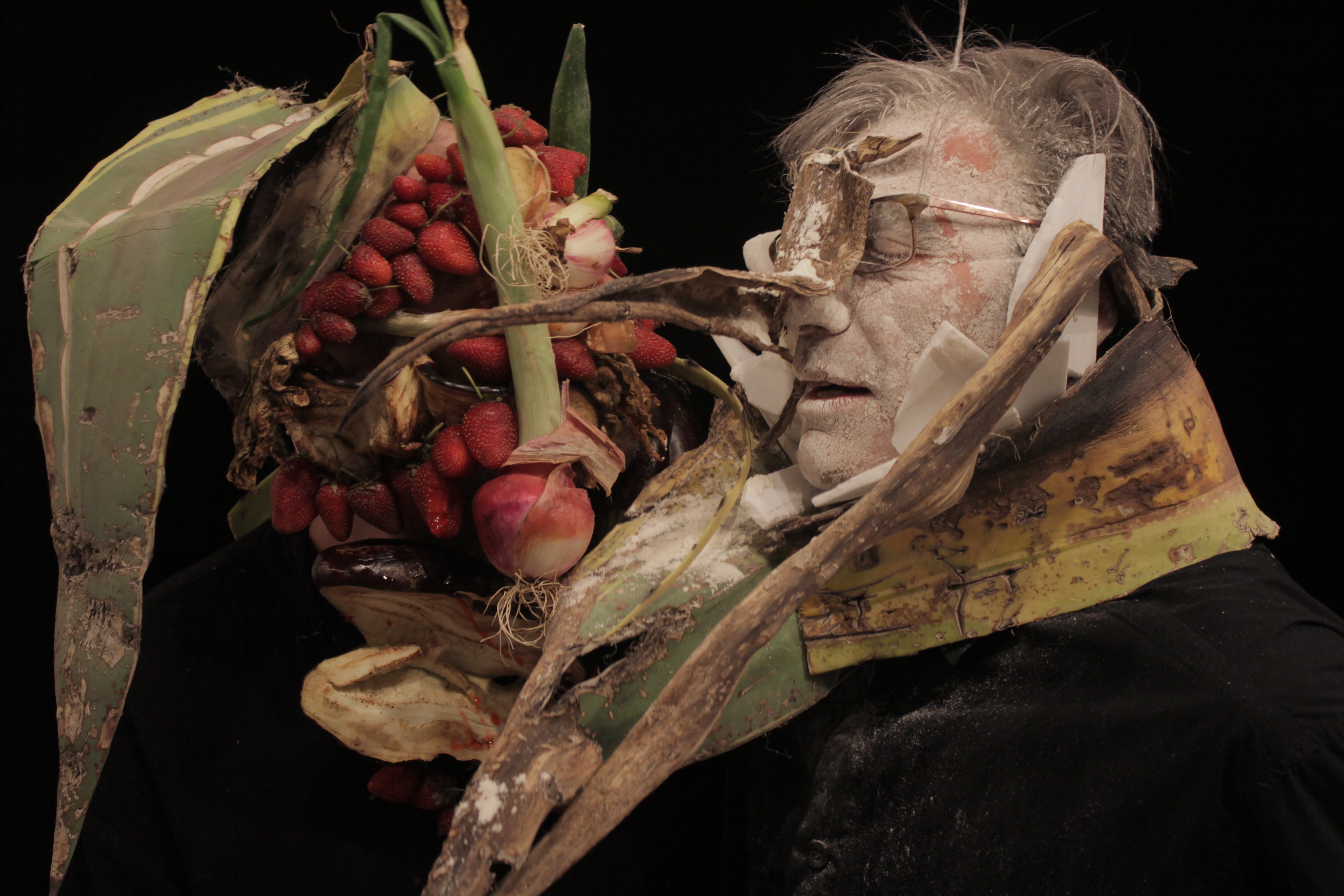

2015 — Time flies like an arrow, fruit flies like a banana
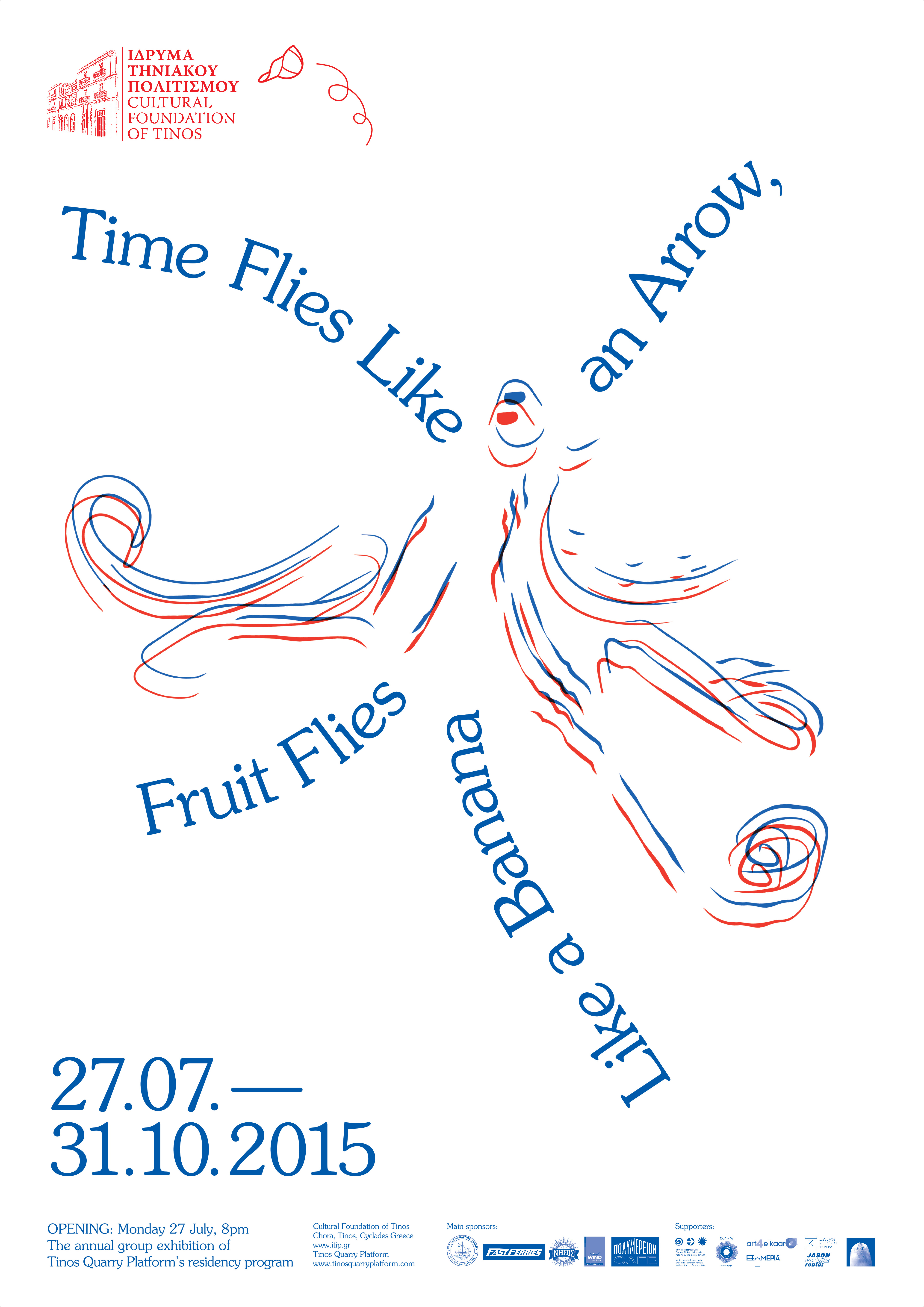
Artists
Lorenzo Cirrincione, Dorota Gaweda, Pakui Hardware, Eglė Kulbokaitė, Mikko Kuorinki, Carl Palm, Jennifer Teets
Curated by
Valentinas Klimašauskas
Organized by
Tinos Quarry Platform residency program in collaboration with the Cultural Foundation of Tinos
Venue
Cultural Foundation of Tinos, Tinos, Cyclades, Greece
Duration
July 27–October 31, 2015
Photos by
Natasha Papadopoulou, images copyright and courtesy of the artists and Cultural Foundation of Tinos
Negotiations (on climate change, the Greek debt, Mediterranean migrant crisis, you name it) are running out of time. Time was once measured by running water, sand, and, besides flying like an arrow, it was running like a river; possibly, as a river of sand. Your tablet's touchscreen, the one that shows, but also waists our time, may be produced from the same sand.
After he became blind, the Argentinean writer Jorge Luis Borges visited the pyramids in Cairo. There he scooped up a handful of sand and sifted it through his fingers. When asked what he was doing he replied, "I am rearranging the Sahara." Like the internet or any other vast amount of information or material, the desert and the ocean have no beginning or end, and may be called hyperobjects as coined by Timothy Morton. Hyperobjects are so massivel distributed in time and space that they transcend spatiotemporal specificity, such as global warming, Styrofoam, or radioactive plutonium. Living with, between, or even inside the aforementioned hyperobjects, like how plankton lives in the ocean, or how sand runs in the desert and in one's palm, we also rearrange the real and metaphorical Sahara and oceans, don't we?
If you prefer, another example comes to mind the weather. In physics and other sciences, a nonlinear system is a system where the output is not directly proportional to the input. In a similar manner, the exhibition was curated by non-linear dynamics: algae, yeast, calendar, the moon, Venus and Jupiter, making a perfect triangle in the sky just before the opening, showering in marble quarries, a referendum, goat's mating season, the wind, and many more objects and factors to come.
"To ask a human being to account for time is not very different from asking a floating fragment of plankton to account for the ocean. How does the plankton bank the ocean?™" asks Raqs Media Collective while being concerned about the qualities of time but also making an eco-poetical connection between plankton and humans. They continue:
What is time?
What is the time?
The time is of your choosing.
The time is not of your choosing.
The time is out of joint.
The time has come.
The time needs changing.
The time has gone.
The time has come and gone.
The time has flown.
The time is not convenient.
The time is at hand.
The time has been spent well.
The time has been wasted.
The time is awkward.
The time is ripe.
The time has passed so swiftly.
The time is now.
What is the time?
Looking from the perspective of the New York Stock Exchange, which is trading and crashing in nanoseconds, a month spent on a Cycladic Island, Tinos, may be compared to a significantly longer period than a month somewhere else. Similarly, from the perspective of a fragment of plankton, a month for the artists on Tinos Island might disappear as soon (or as long) as a nanosecond on Wall Street.
The residency and exhibition does not ask the artists or the audience to be accounted for the time spent, but seeks to create artistic and poetic links between the organic and the non-organic, a part and the whole (as in plankton and the ocean), and constructs distinct perspectives to look at ourselves, not to mention the time and space from the point of view of an ophidian, a voting ballot from the last referendum, or an immortal jellyfish Turritopsis dohrnii, just to cite another example.
